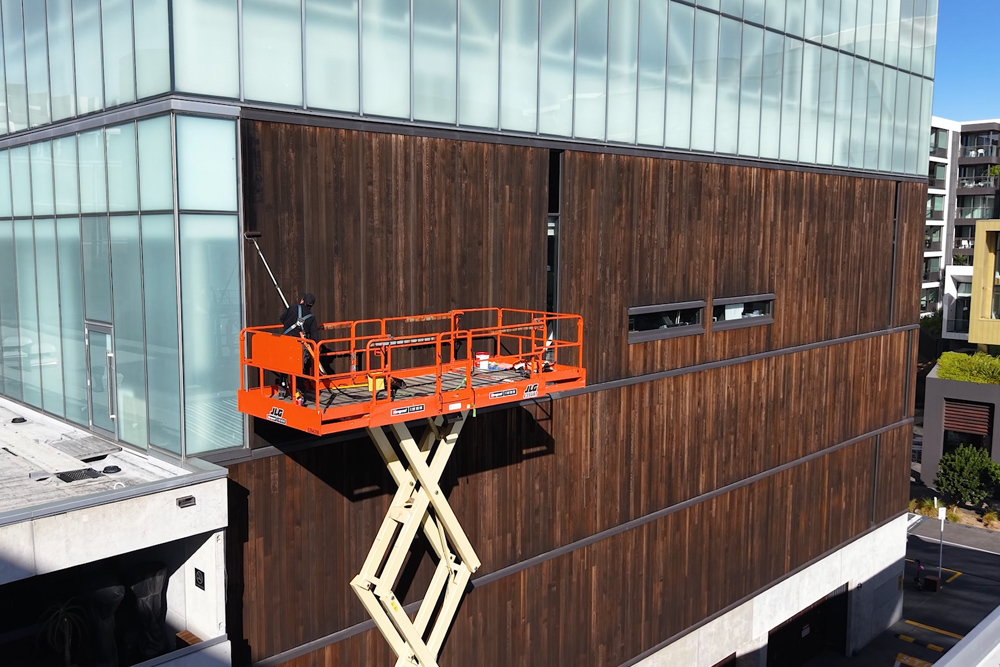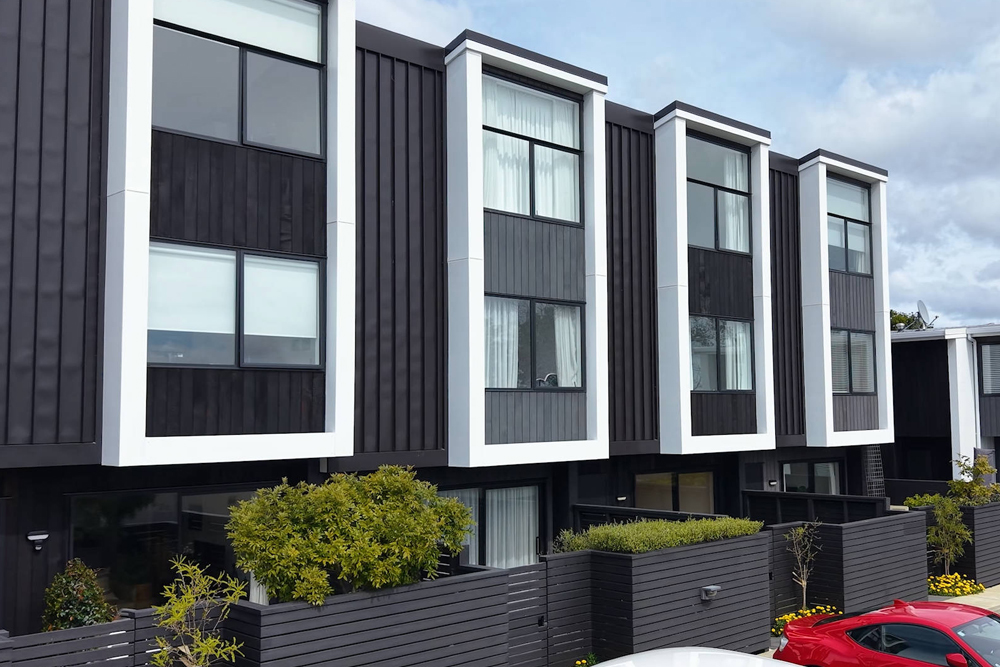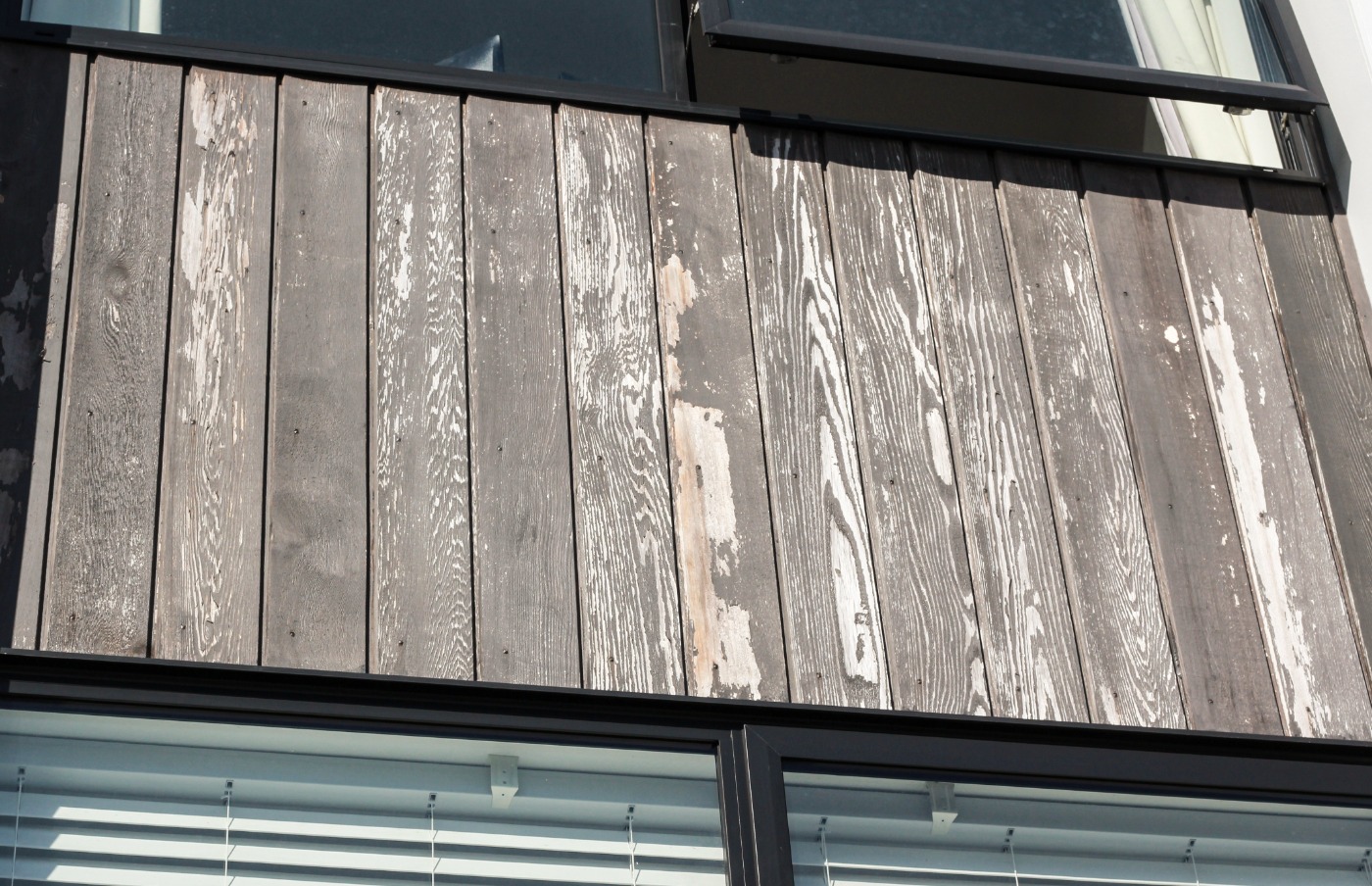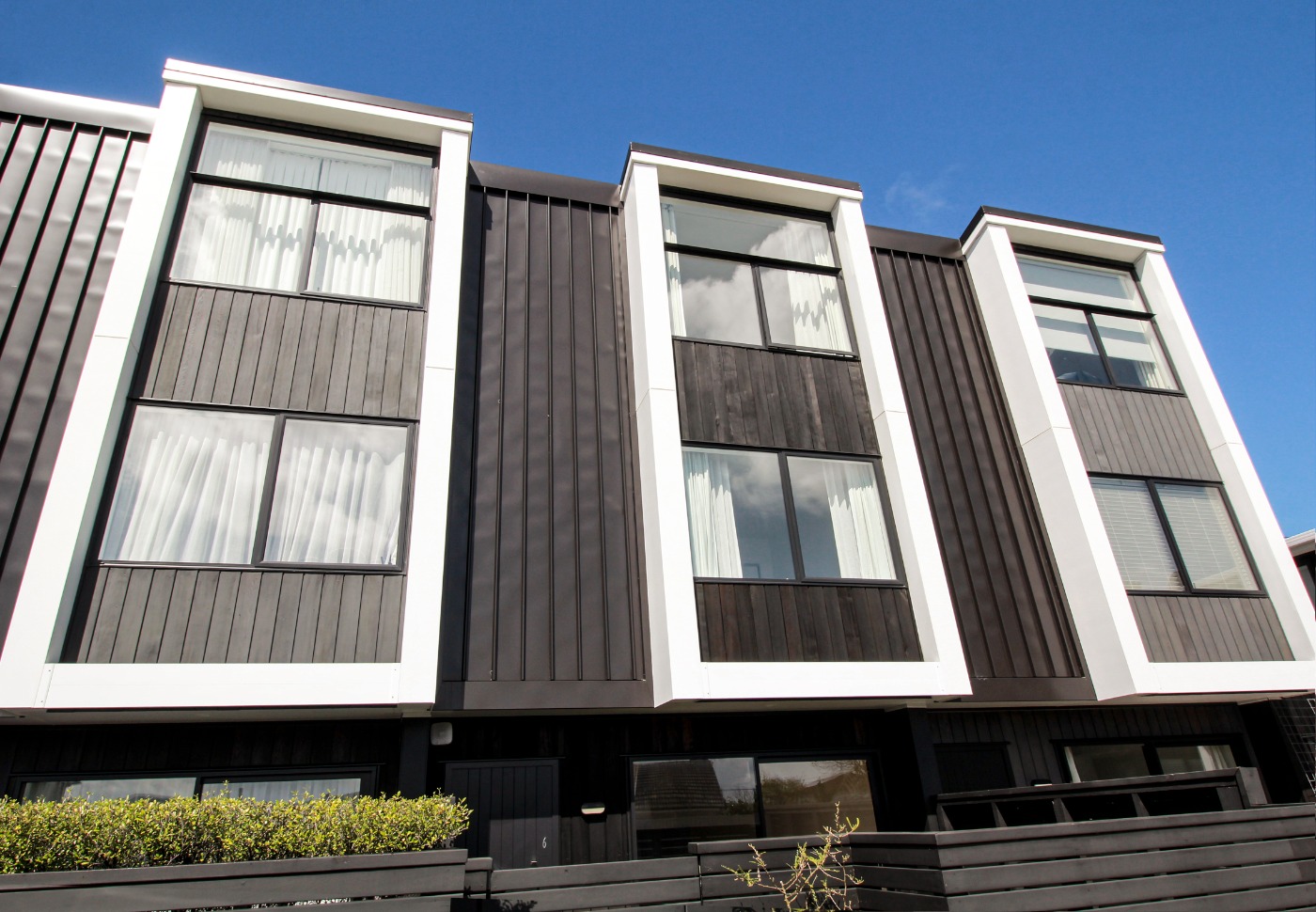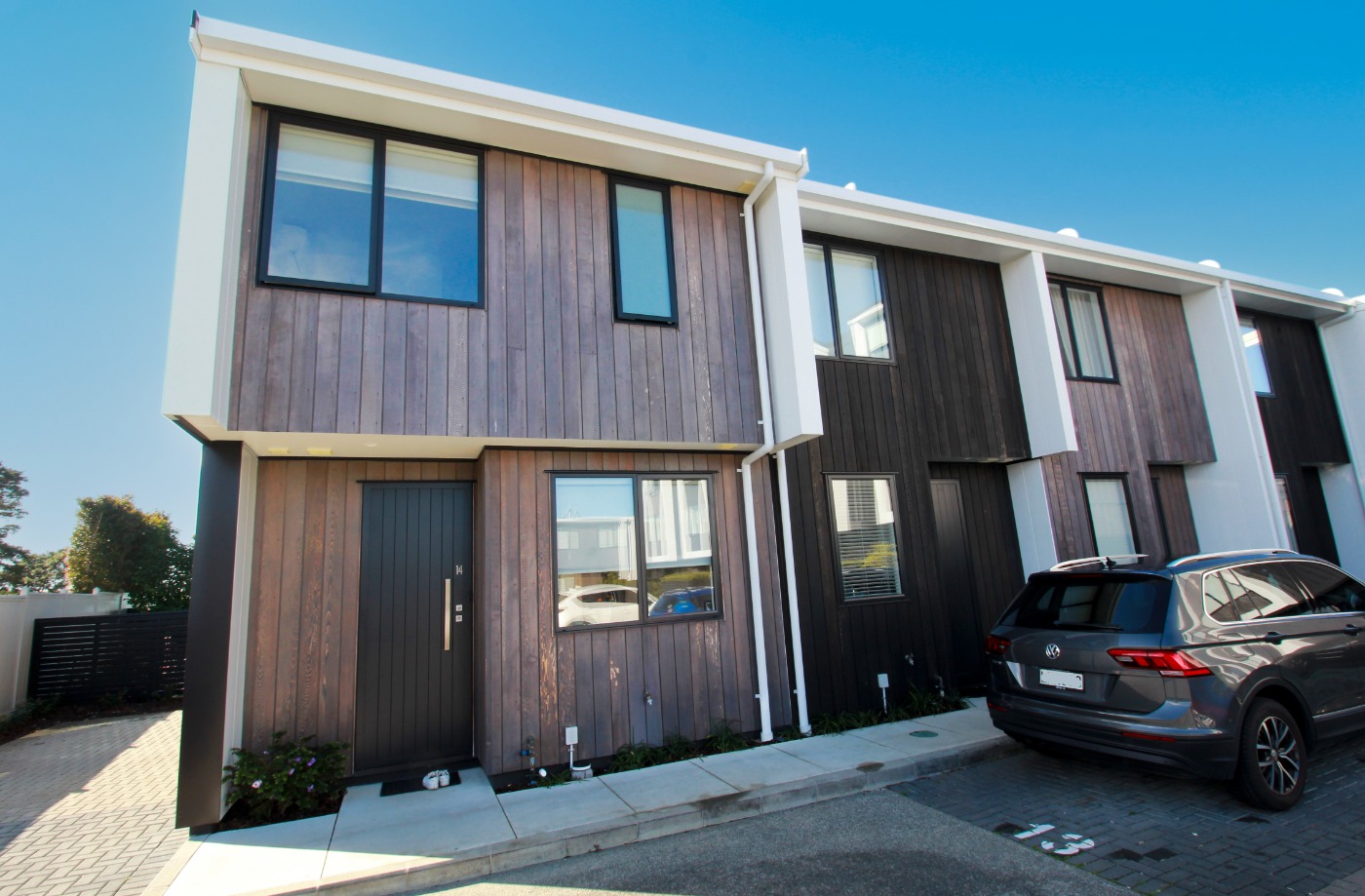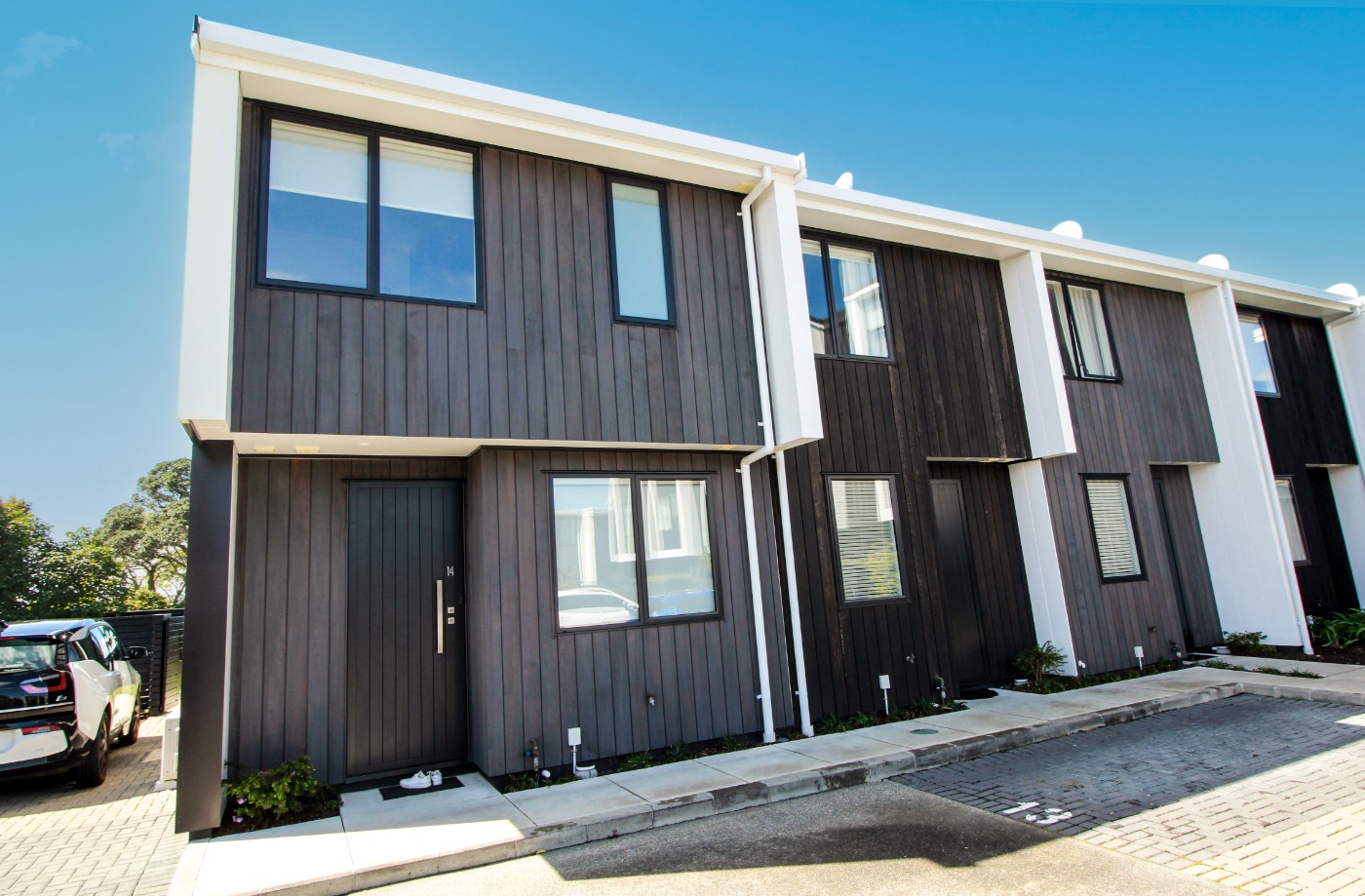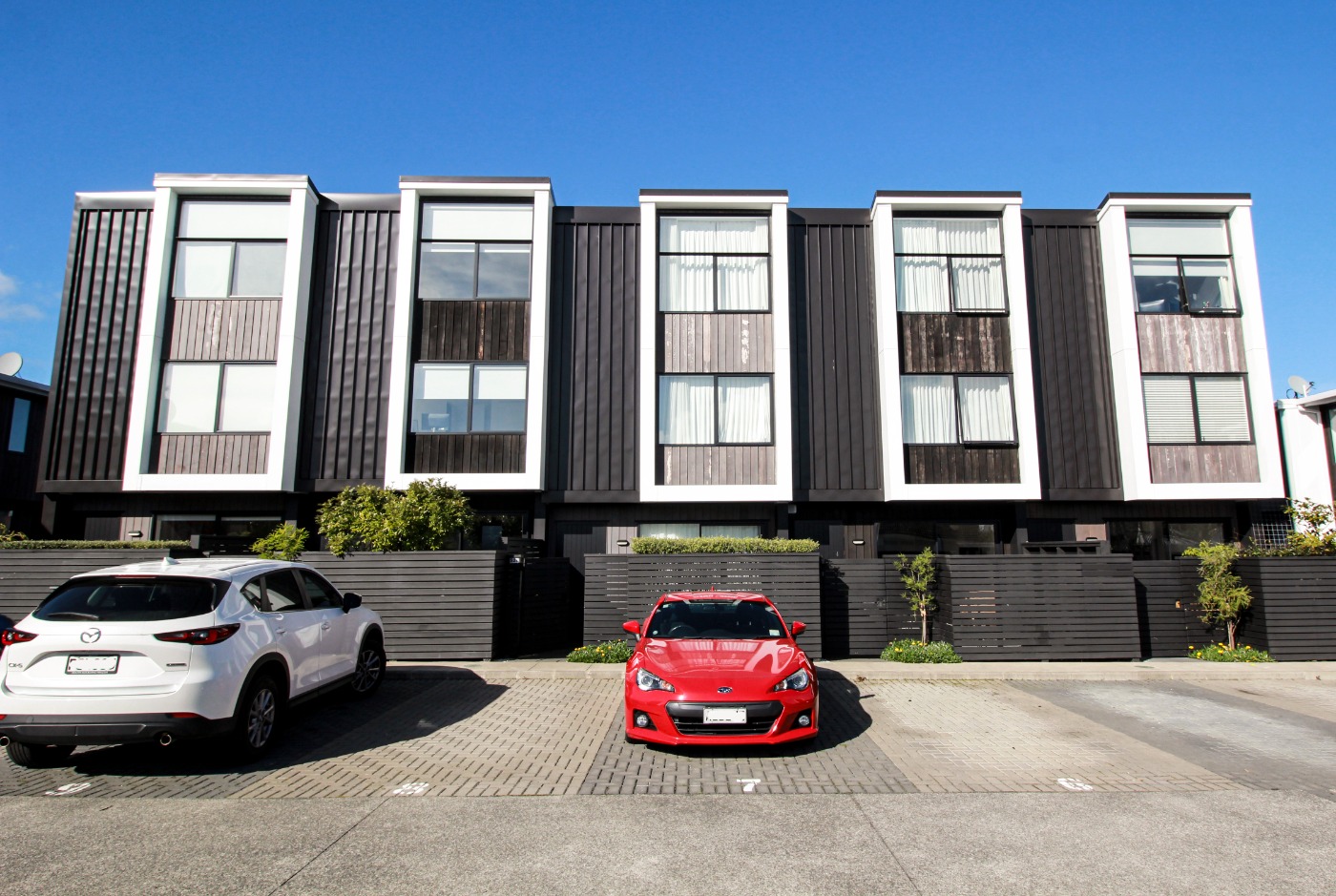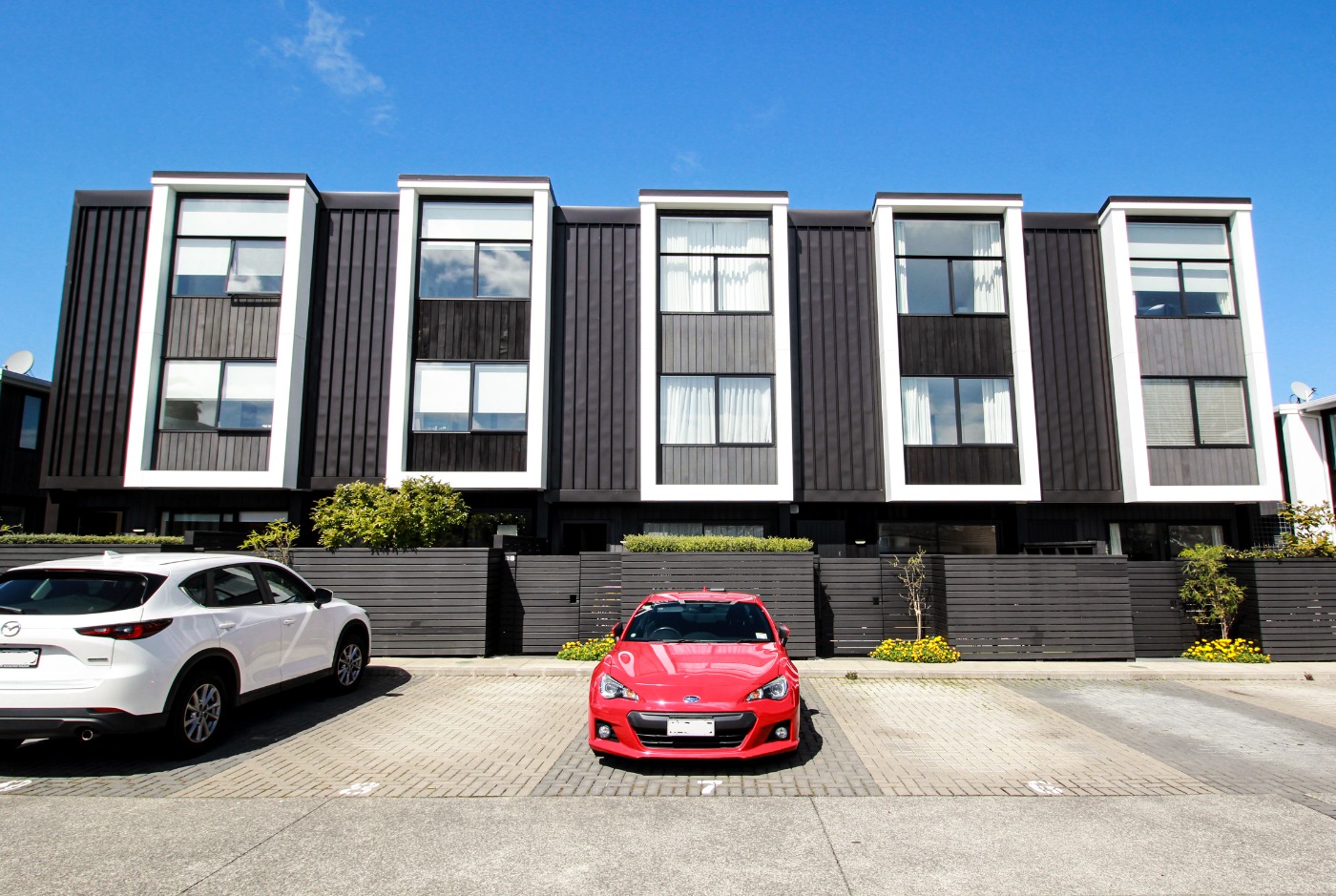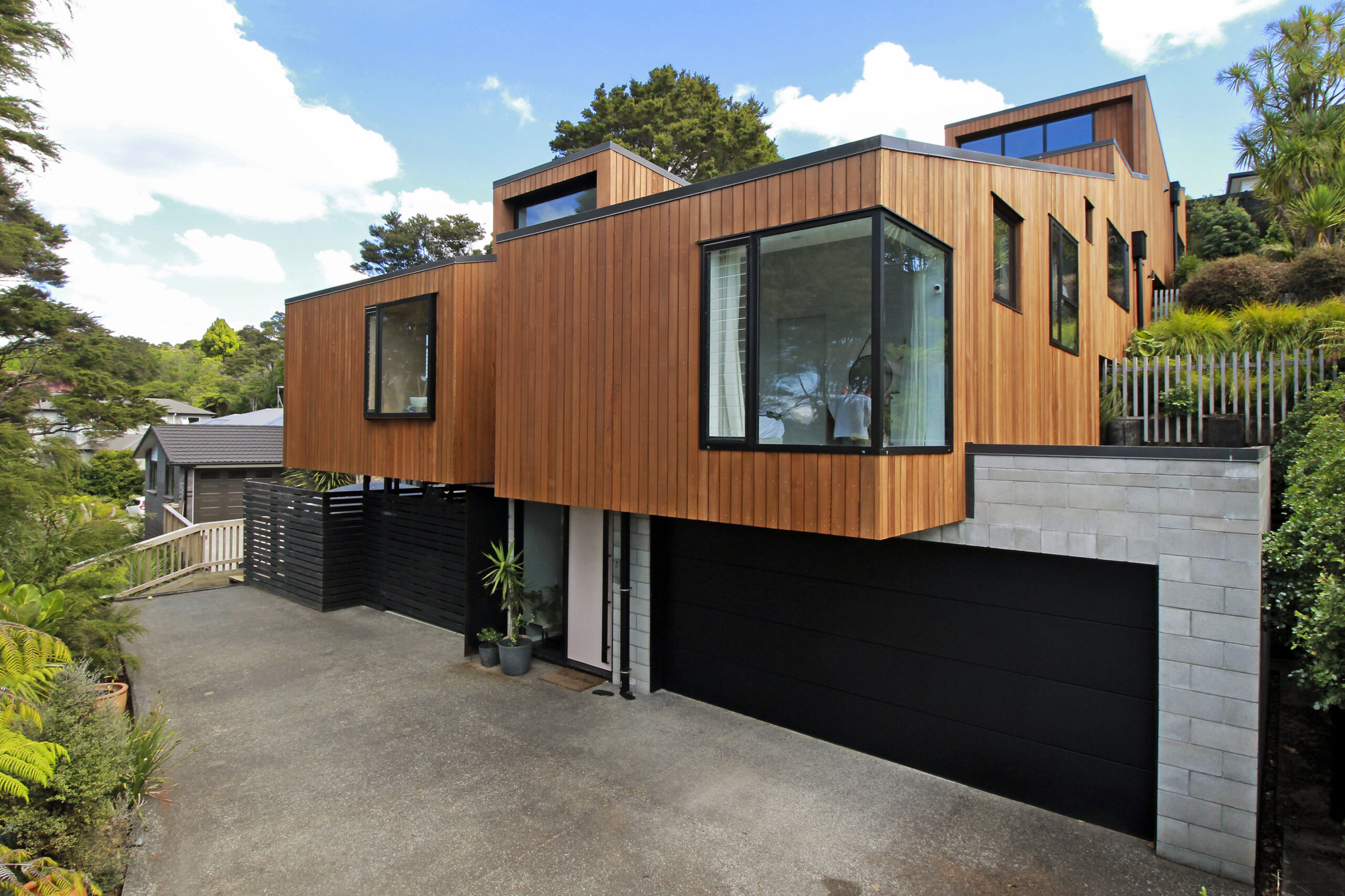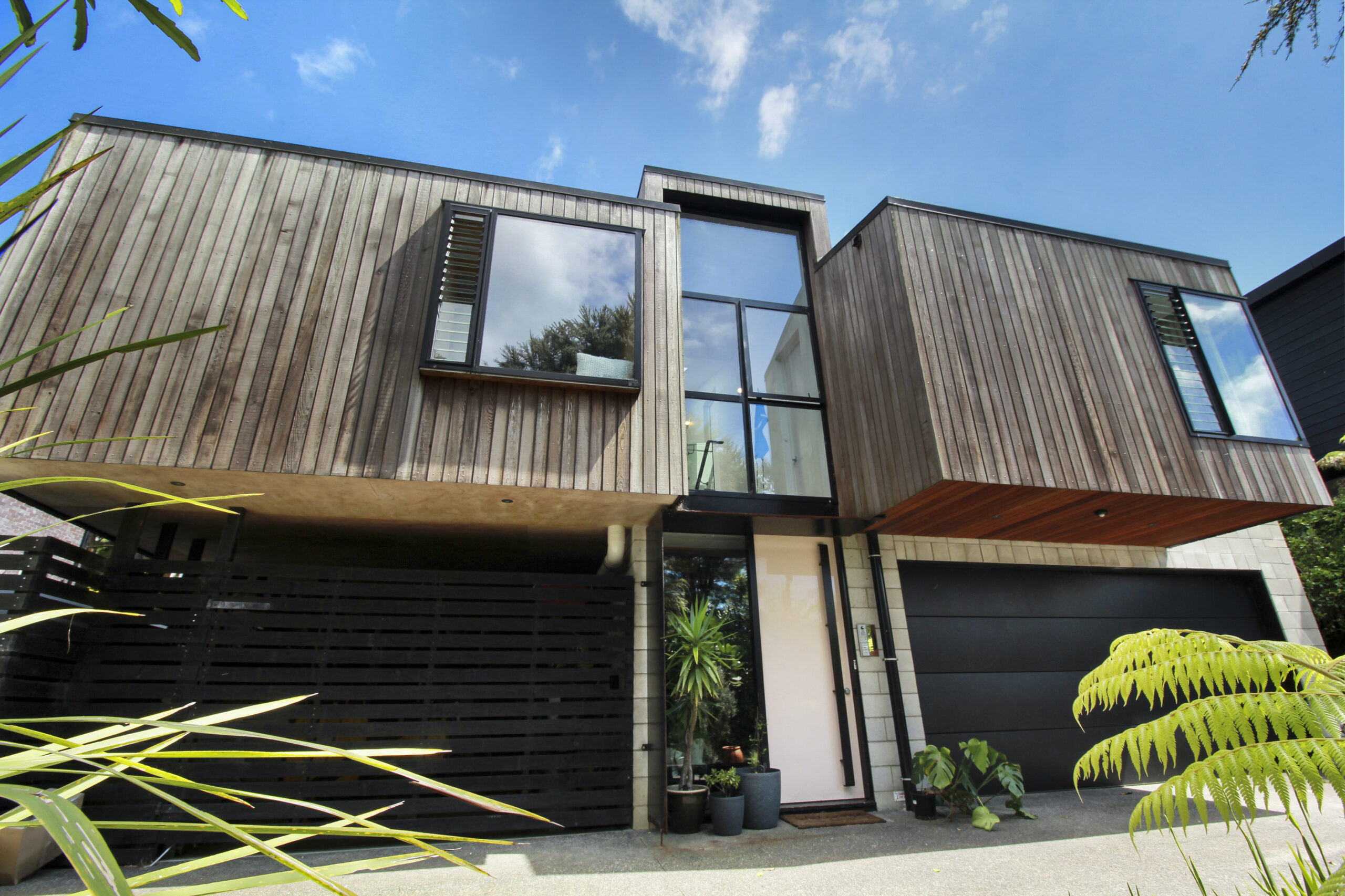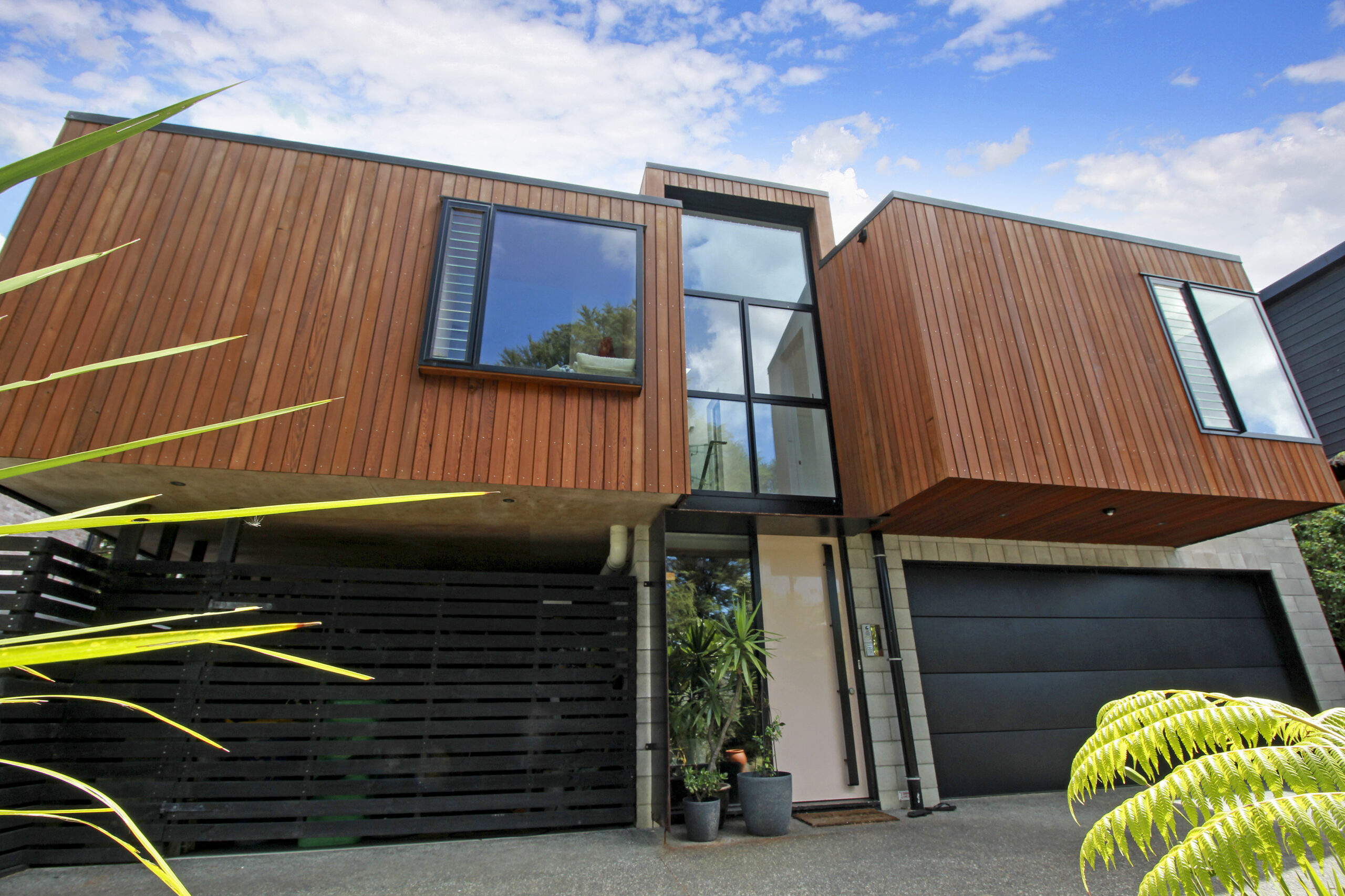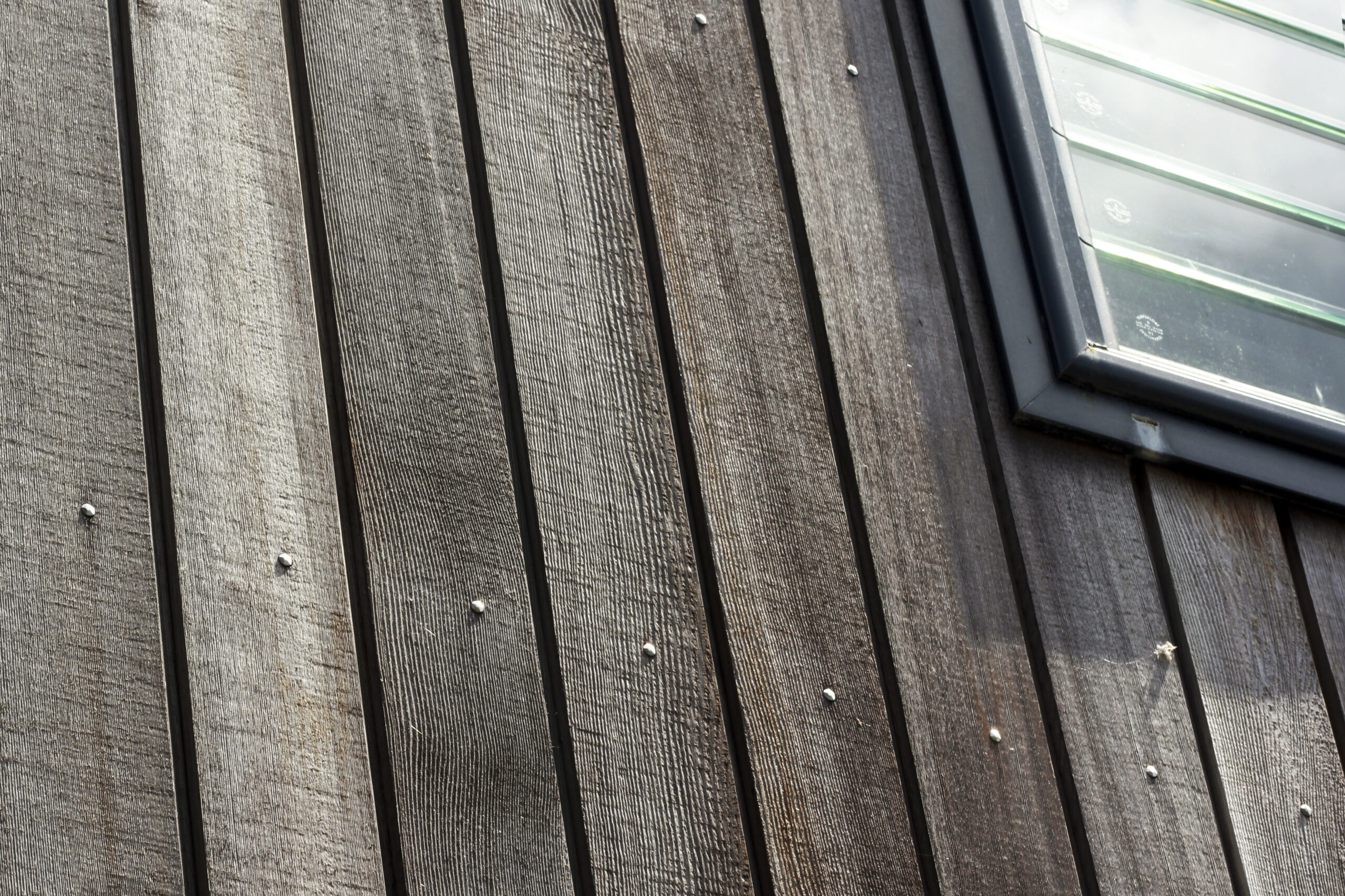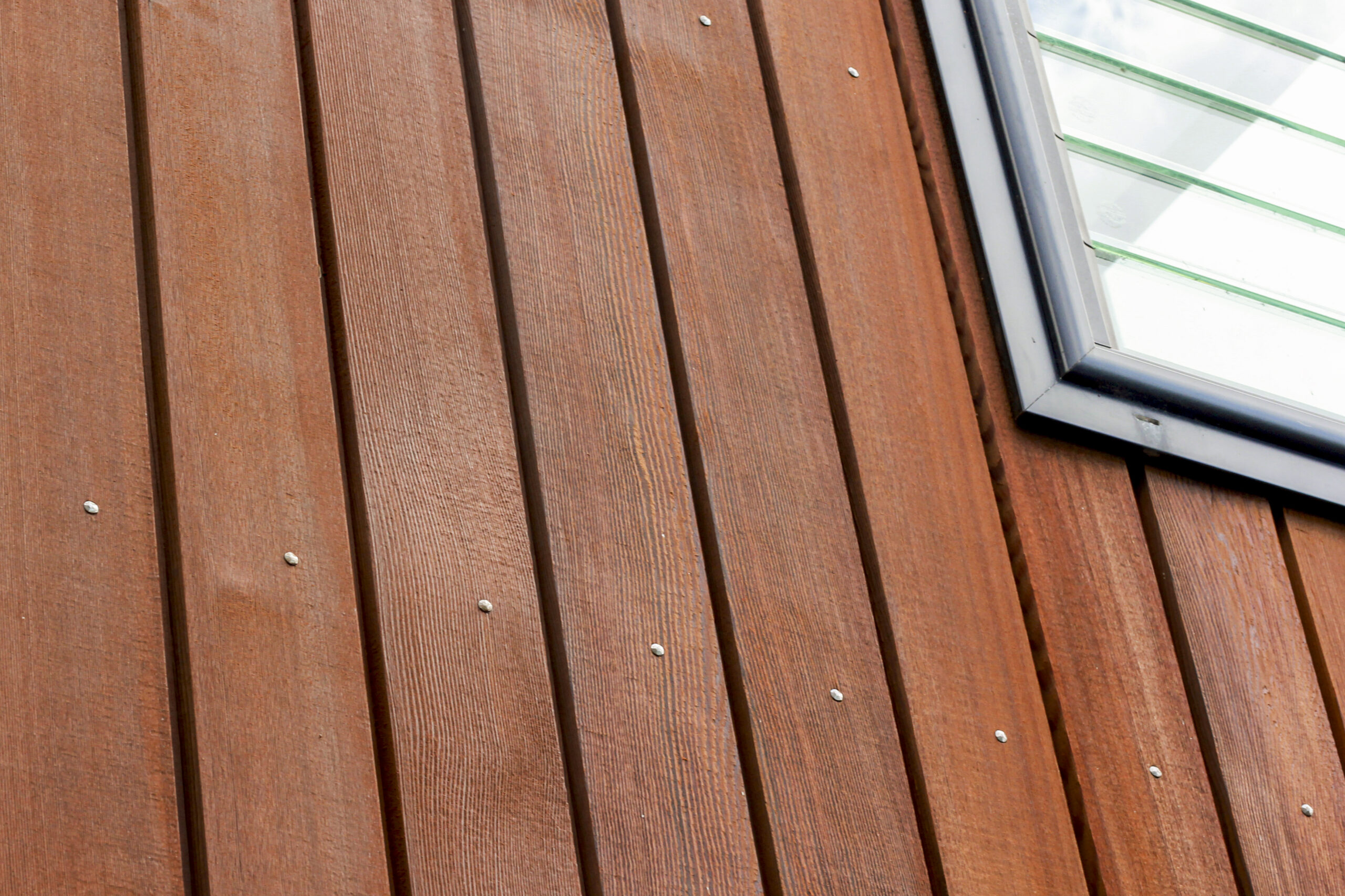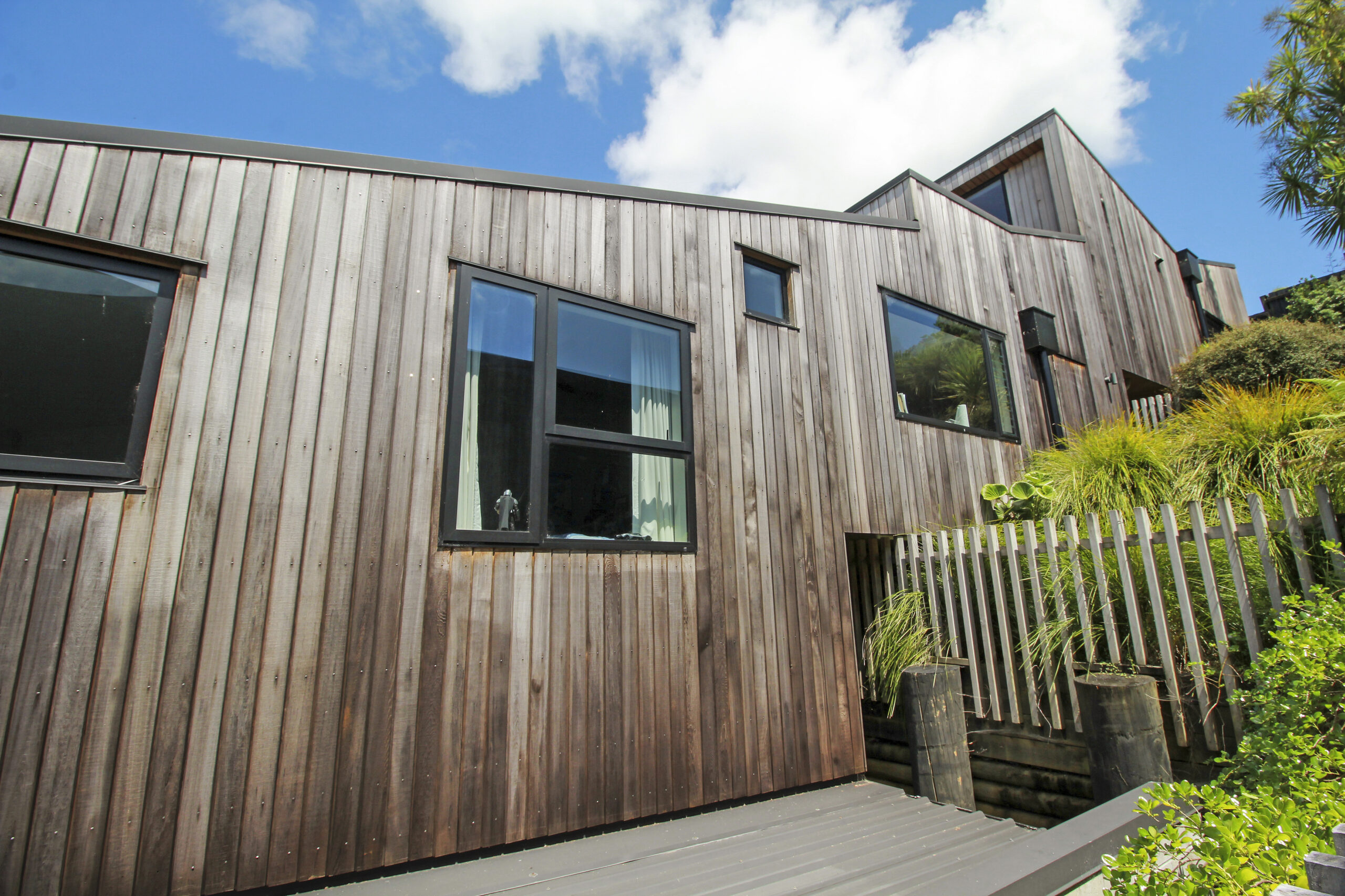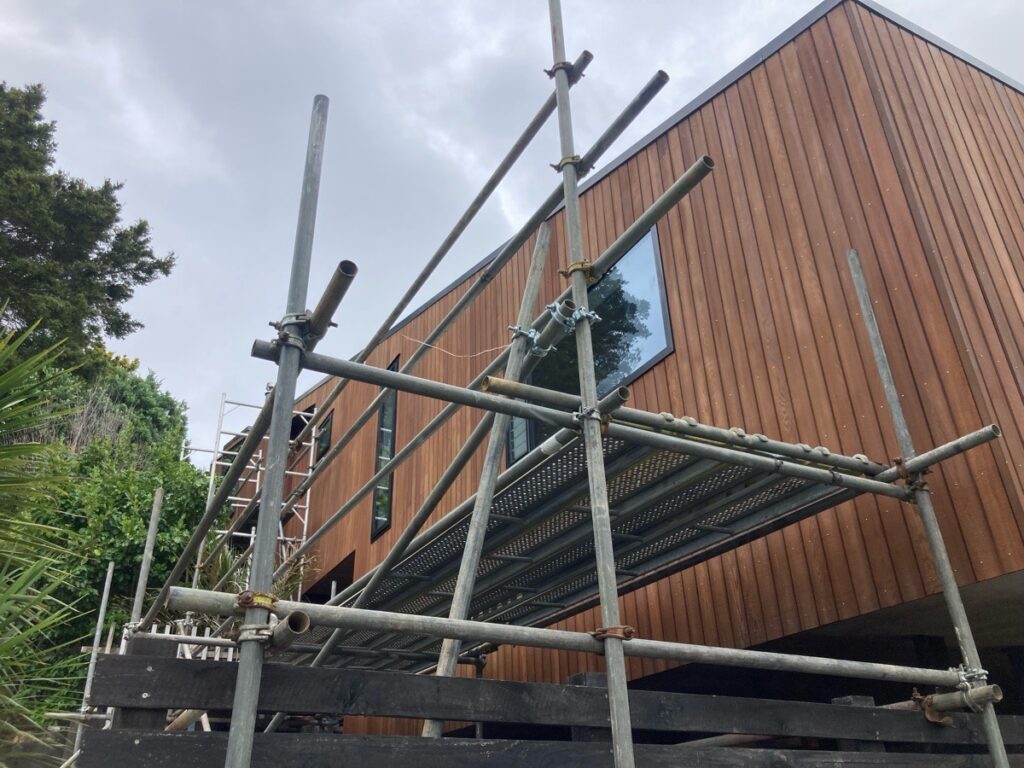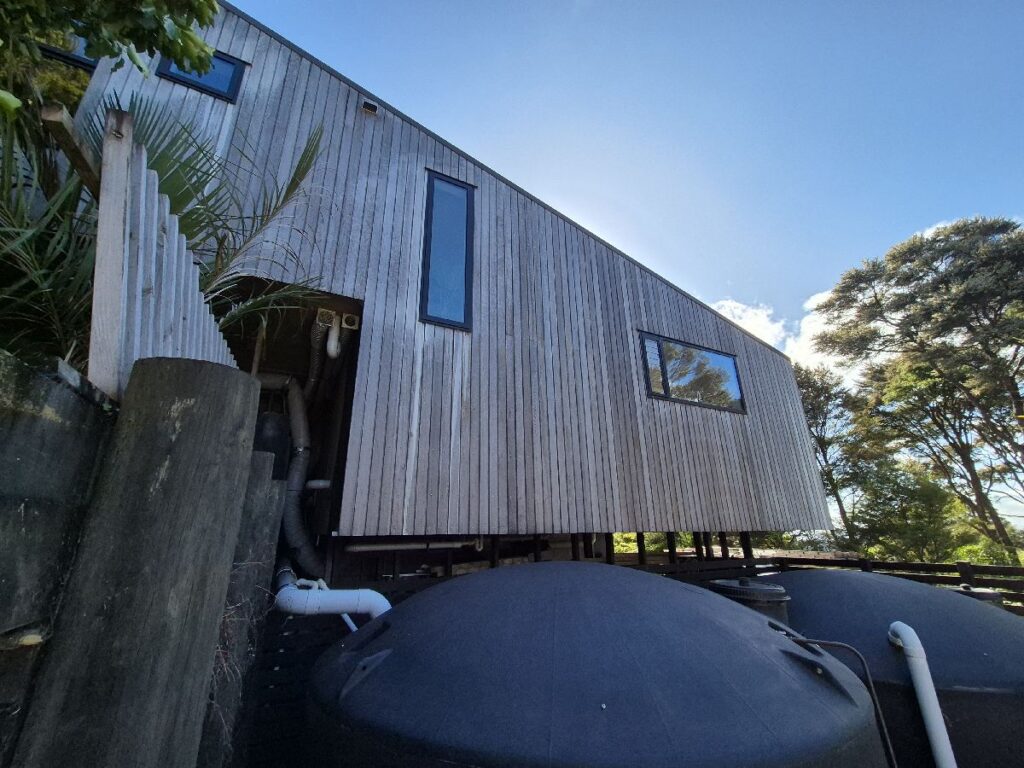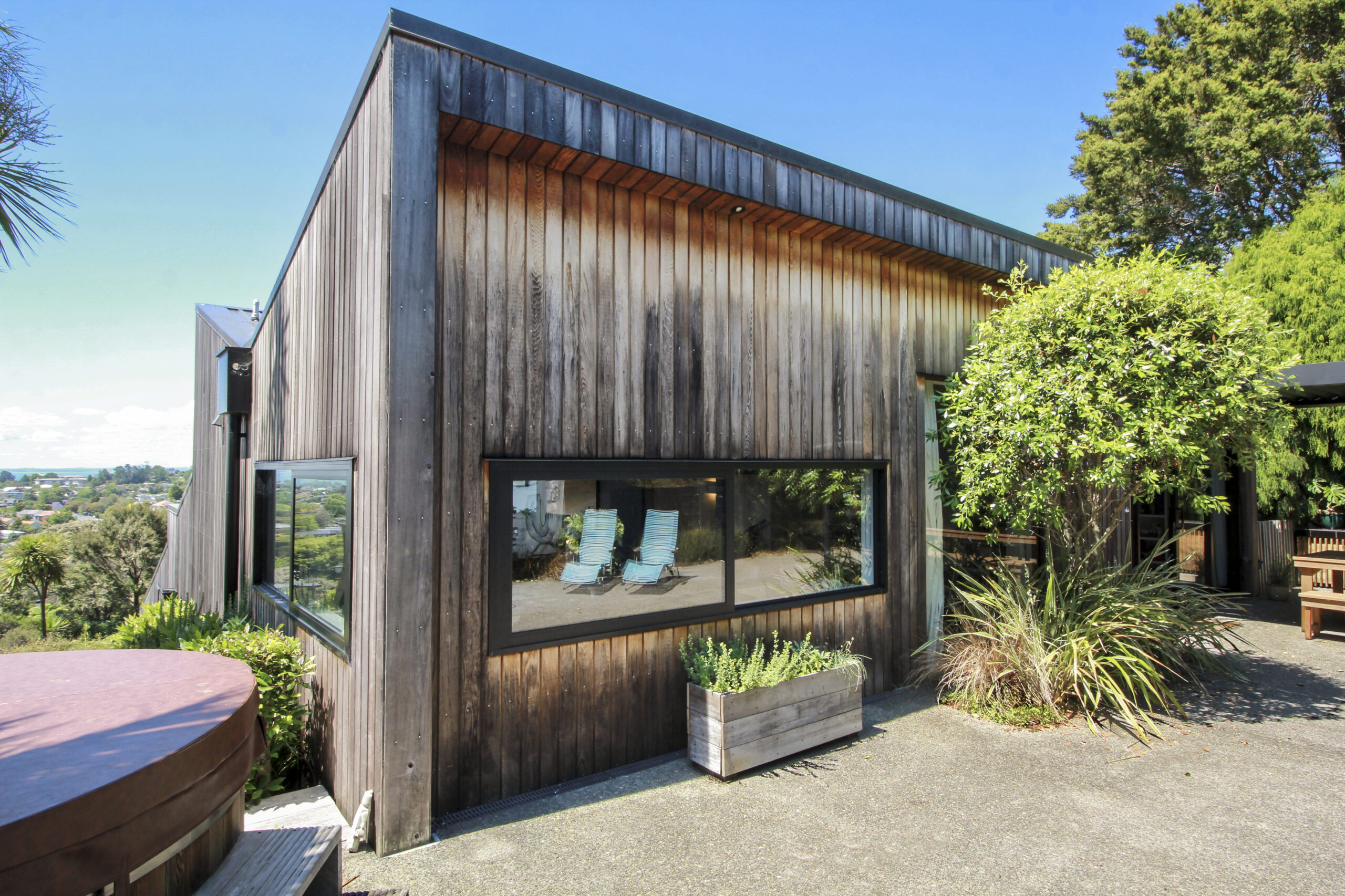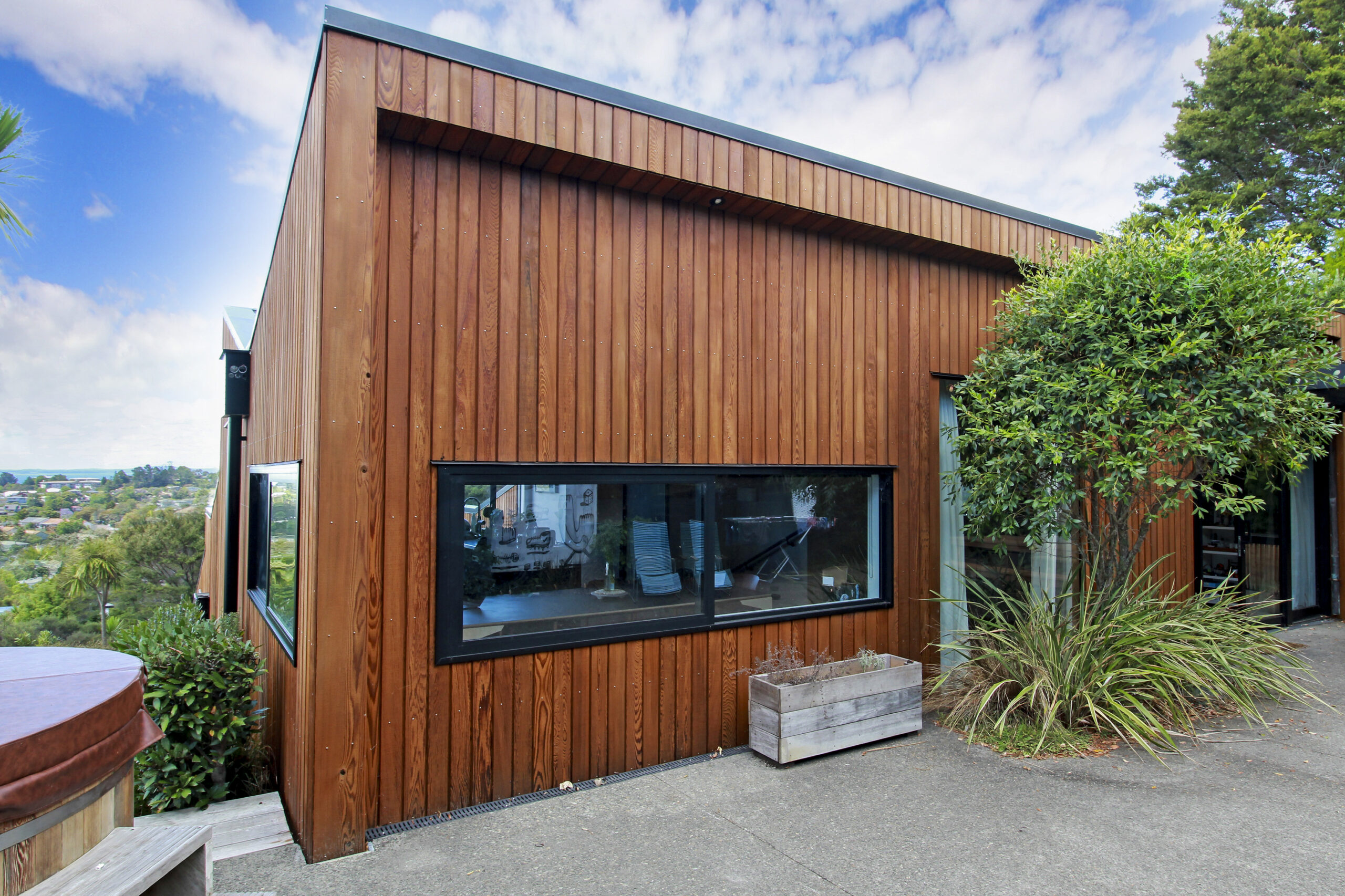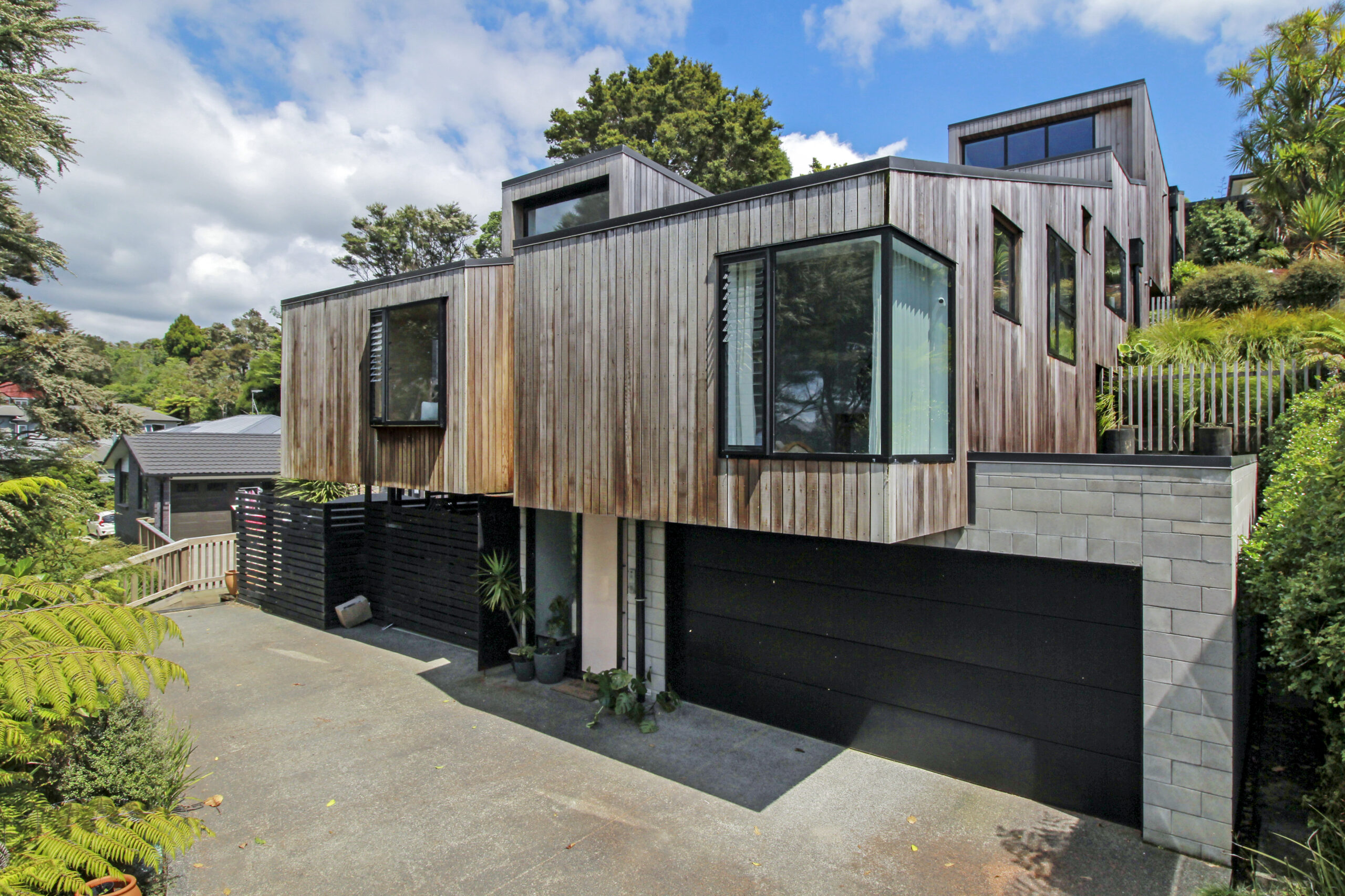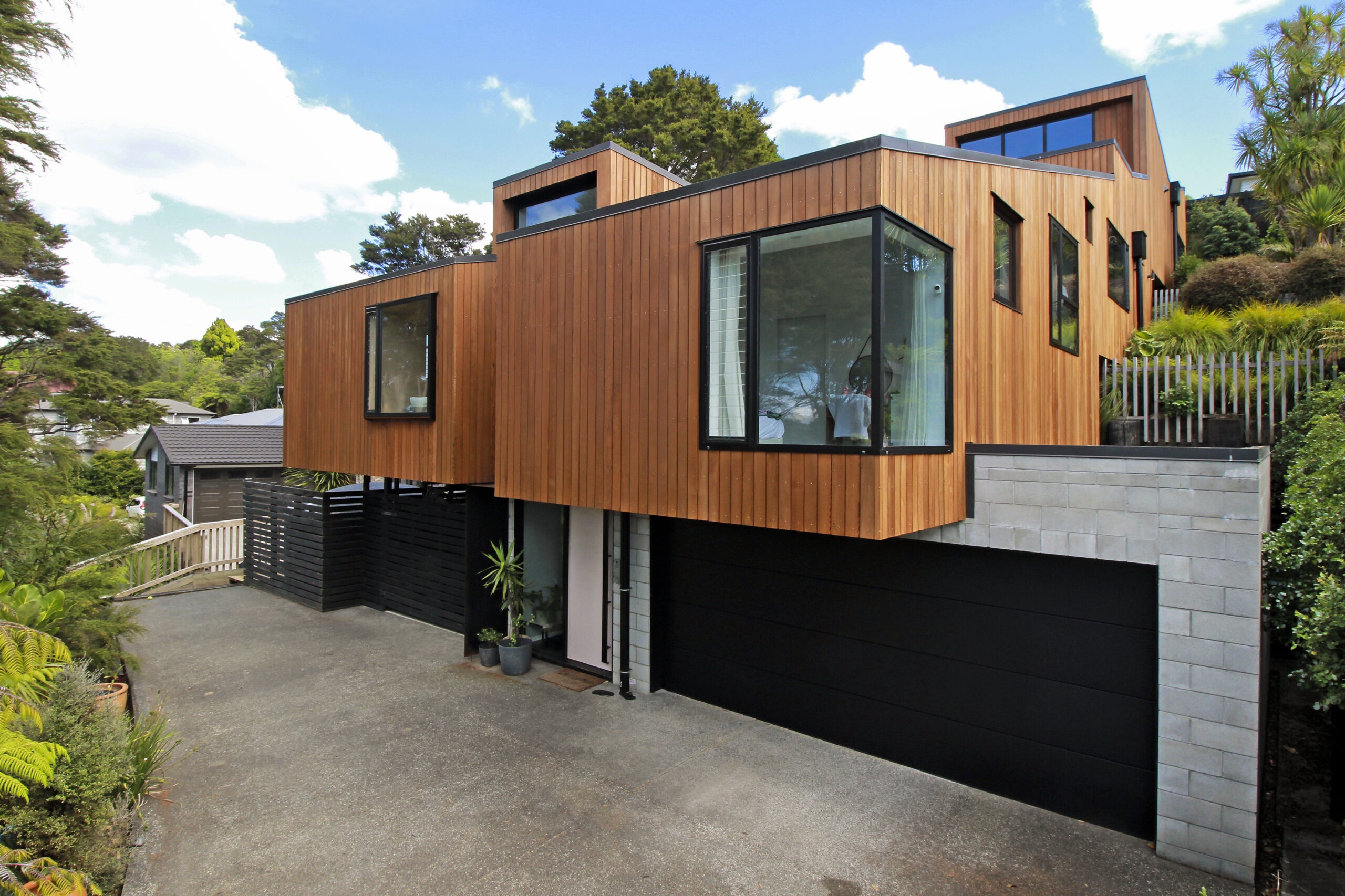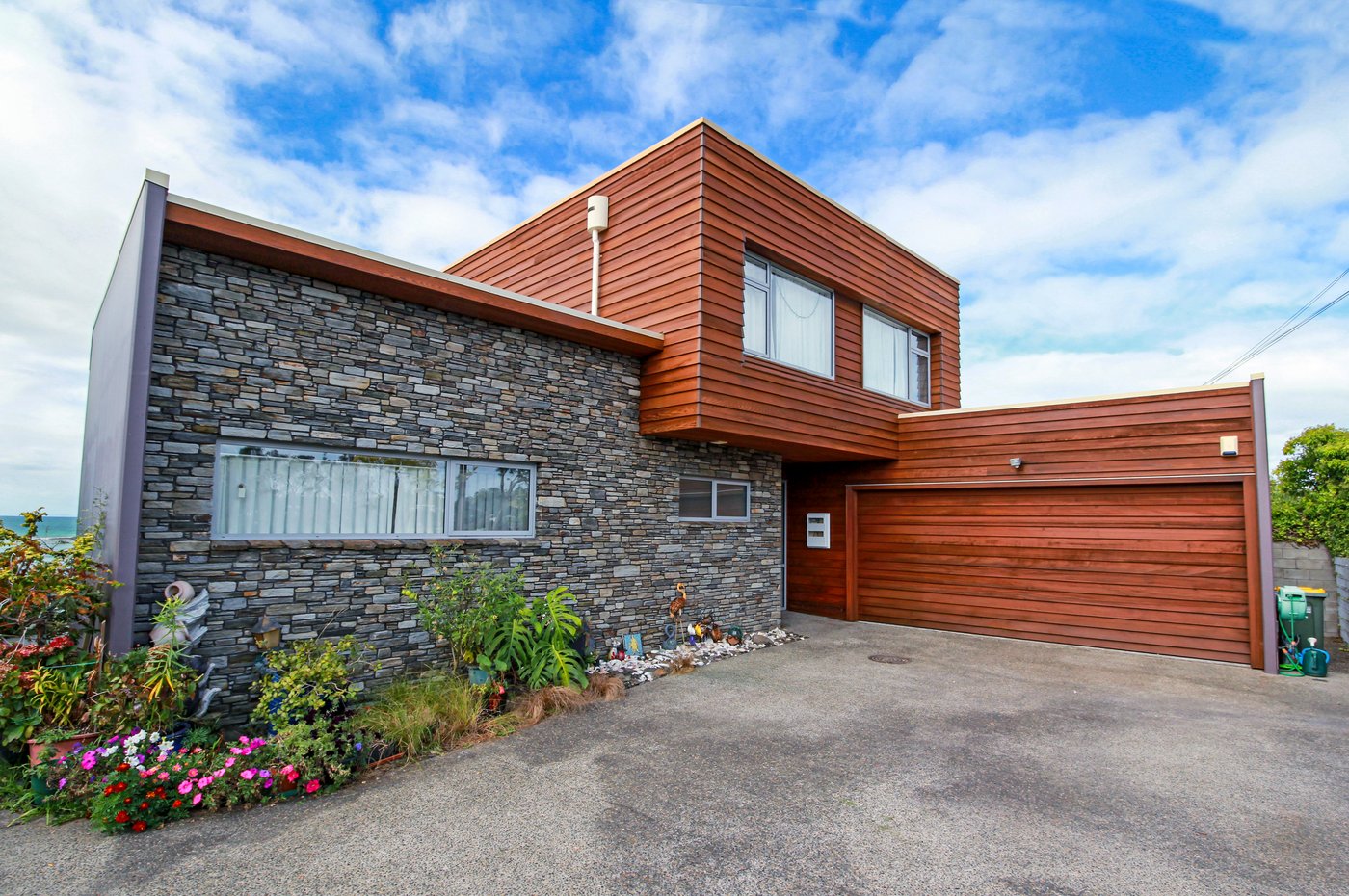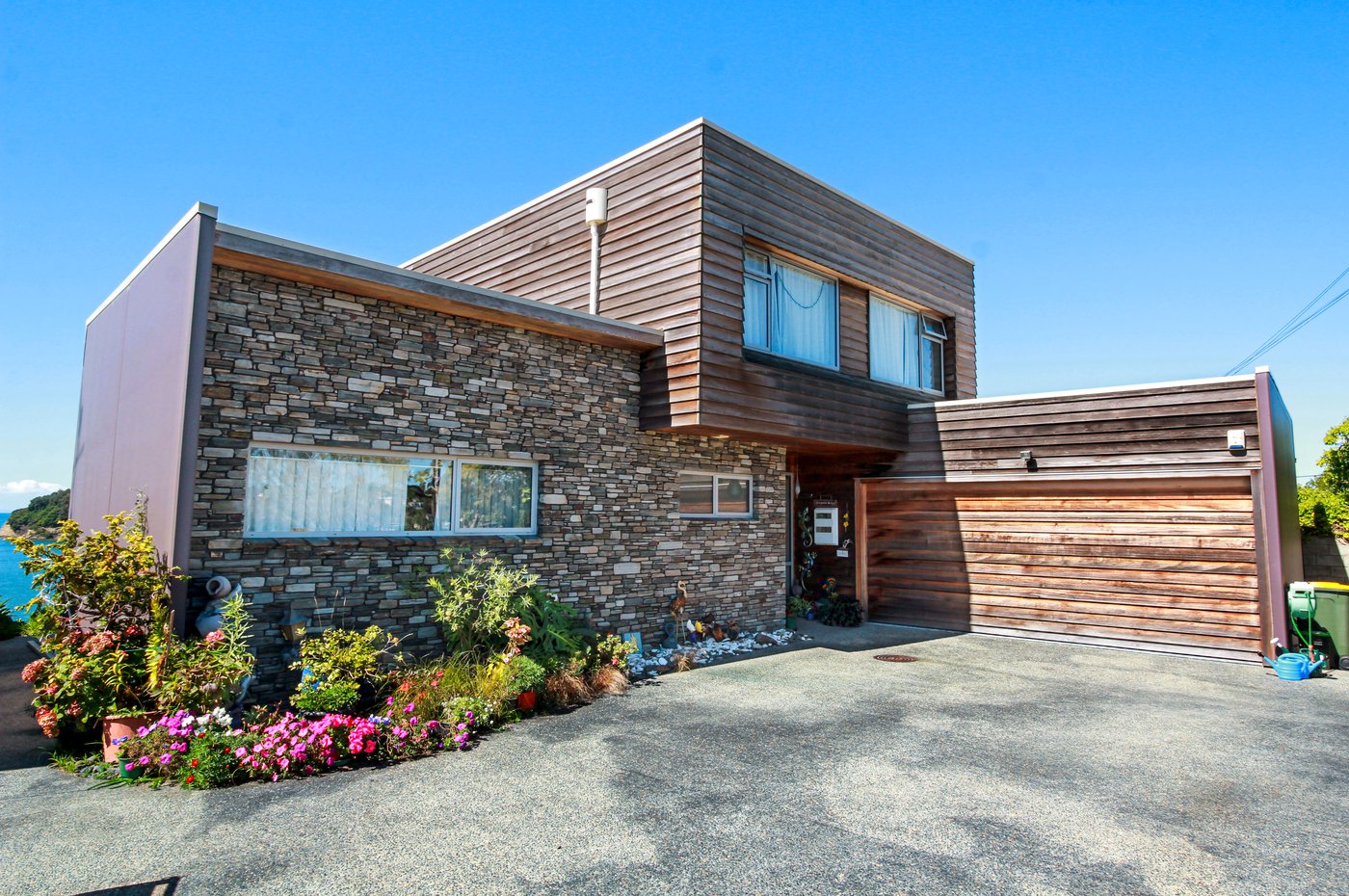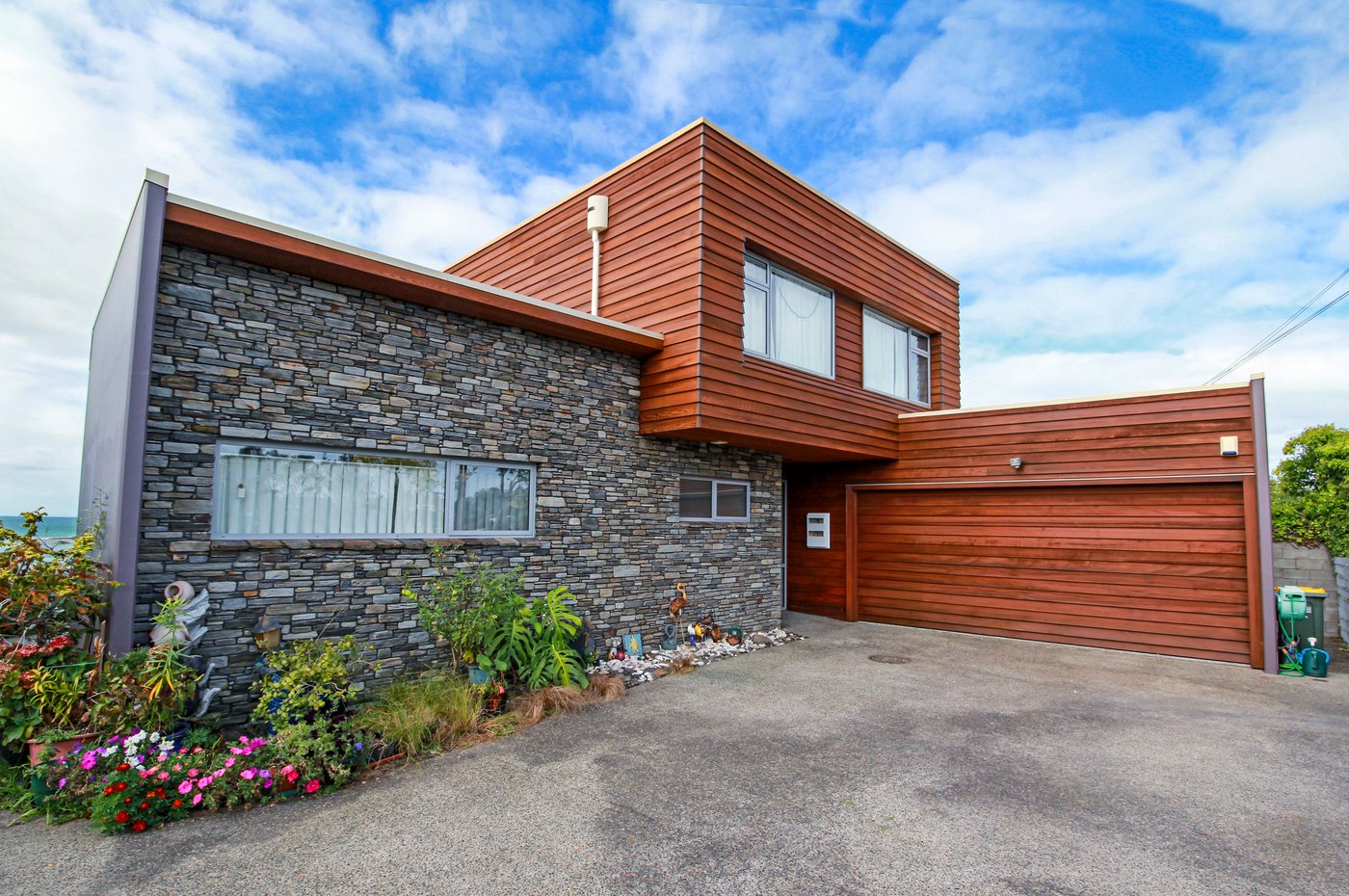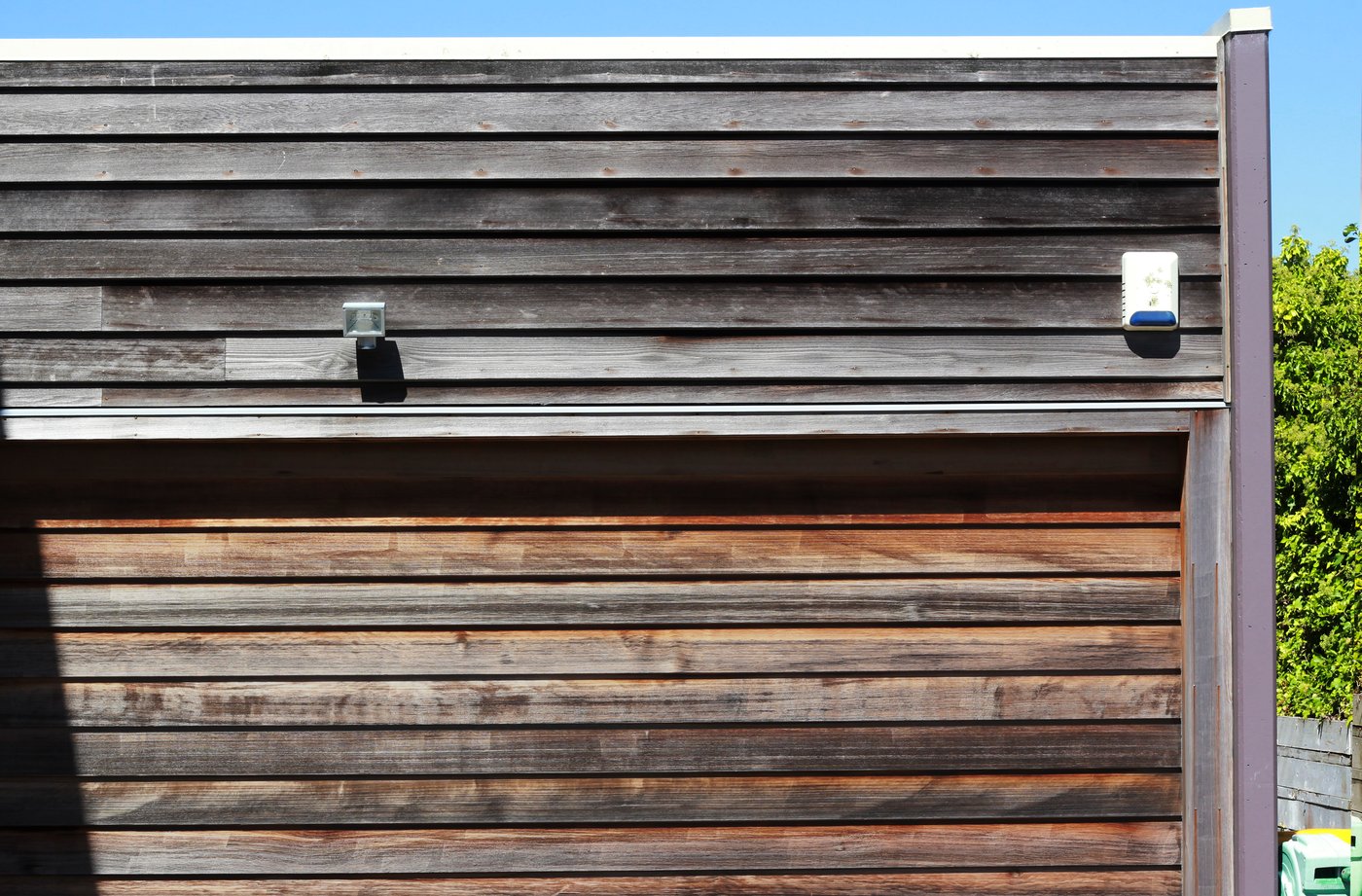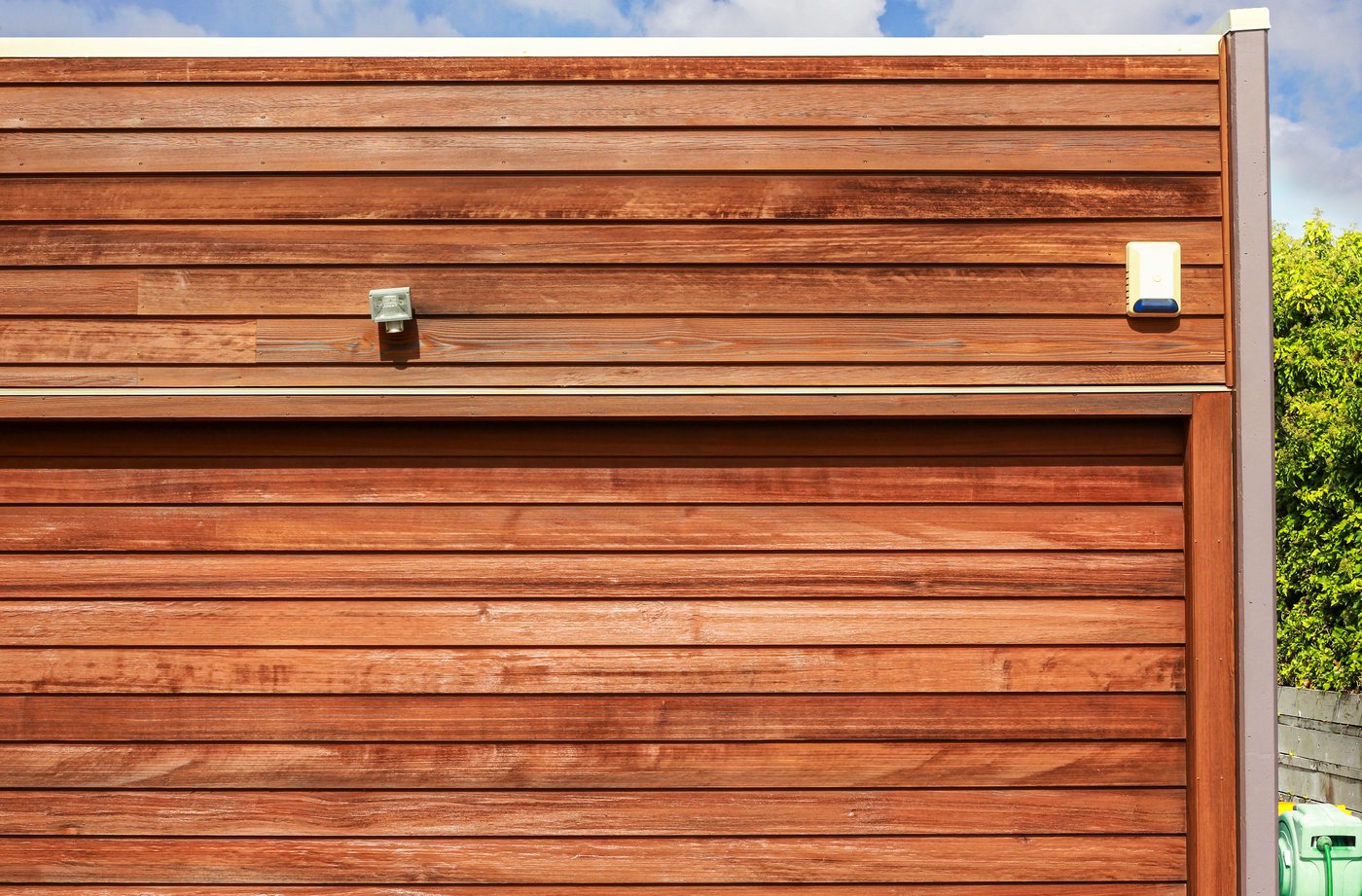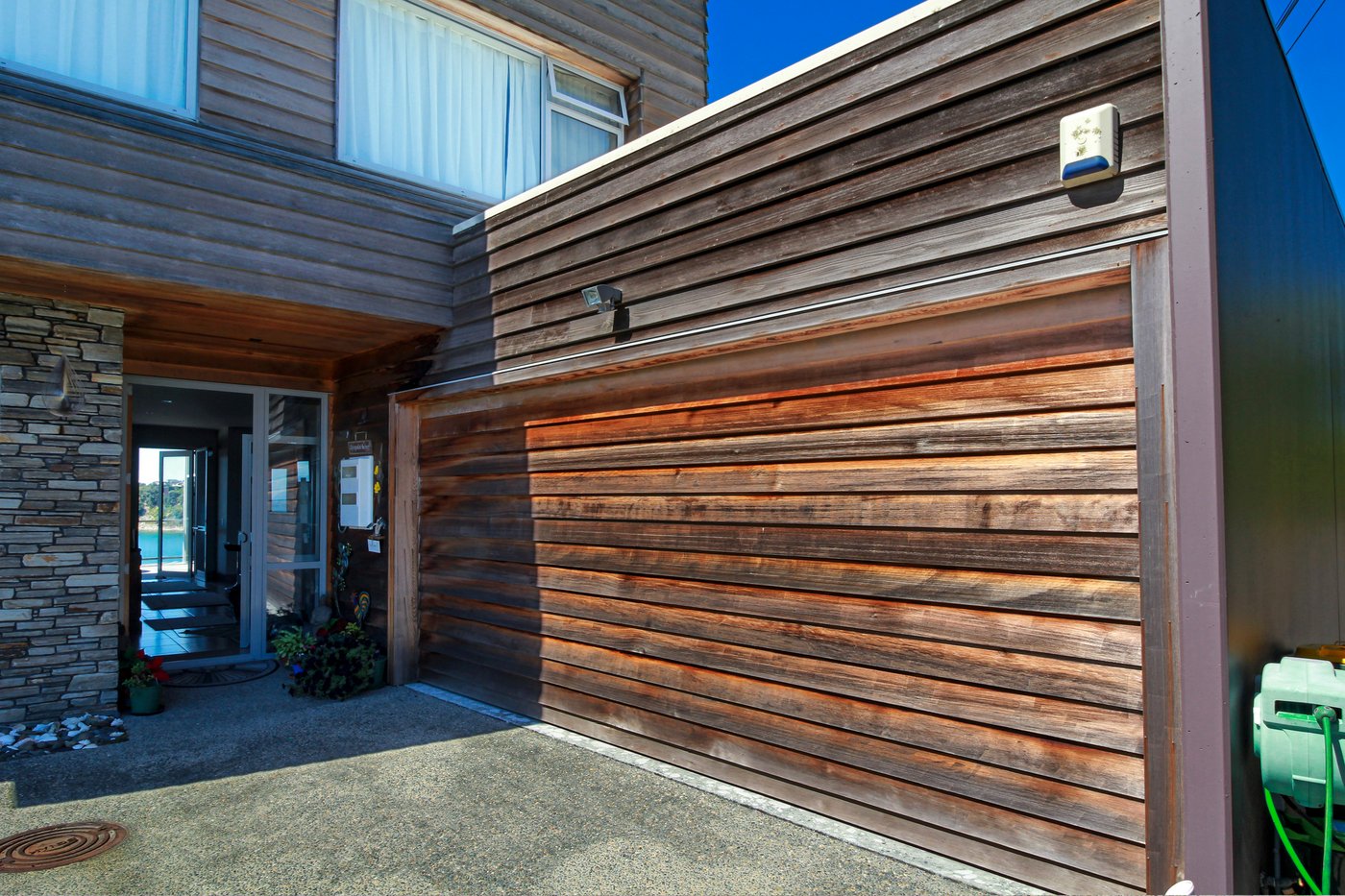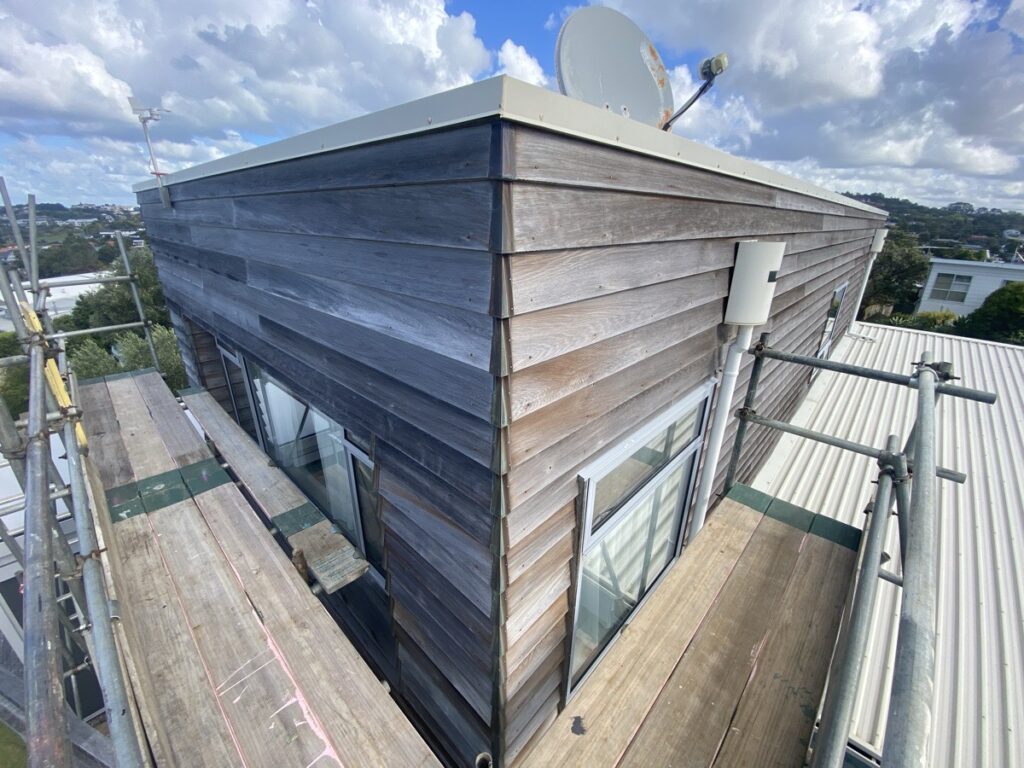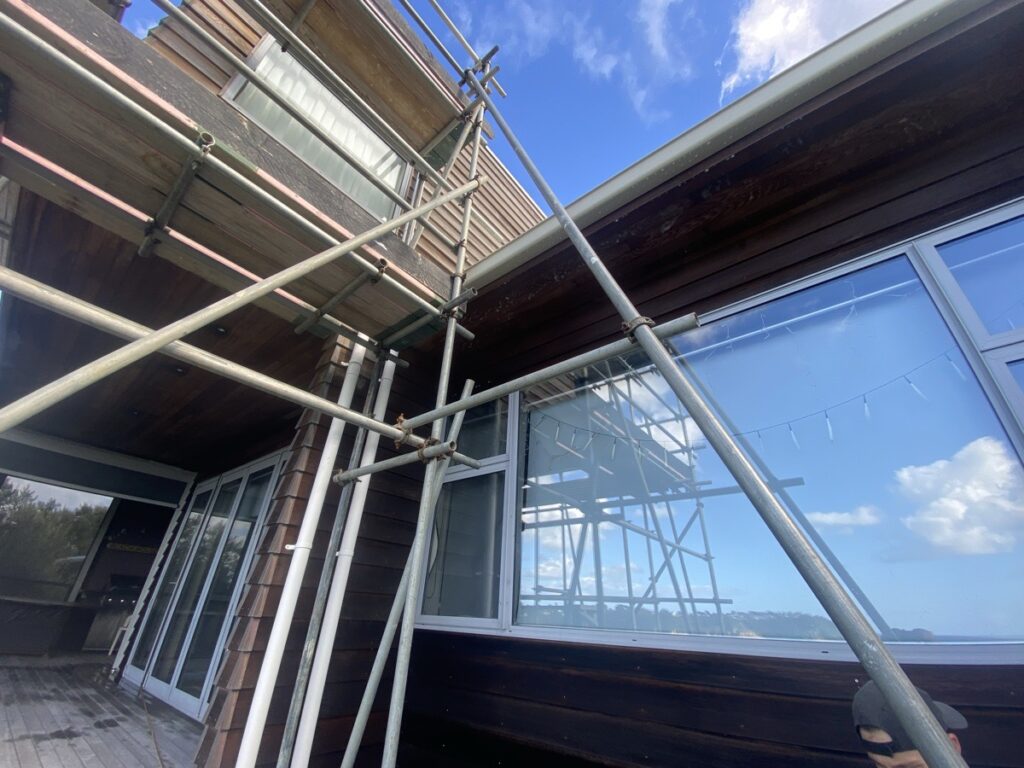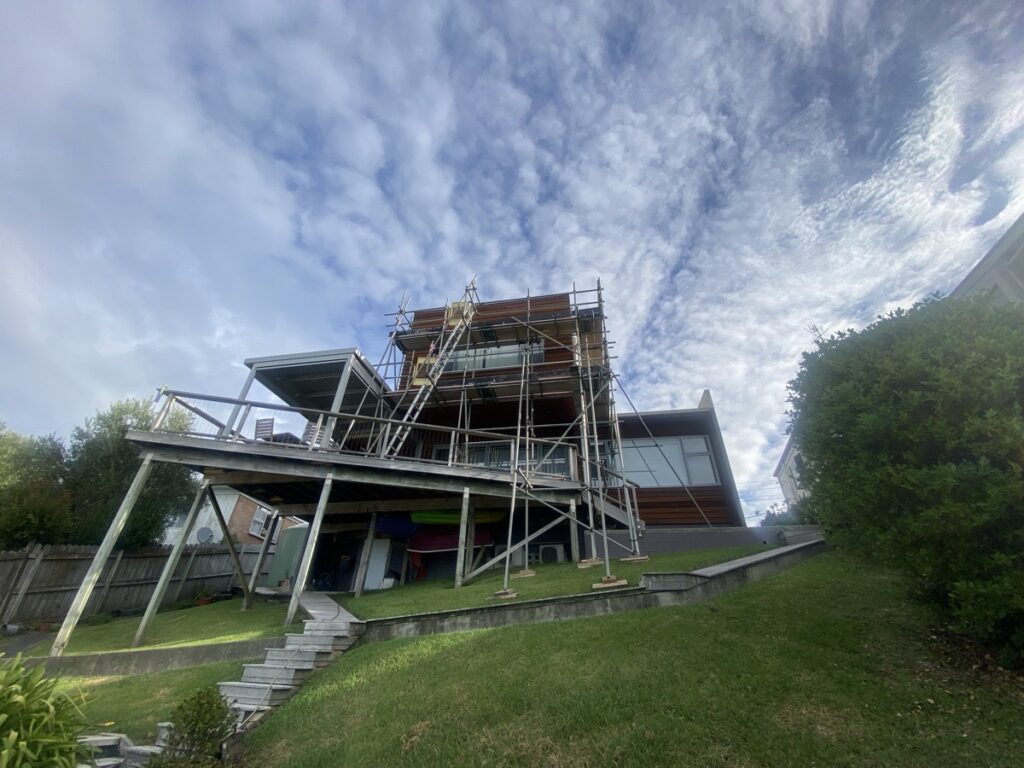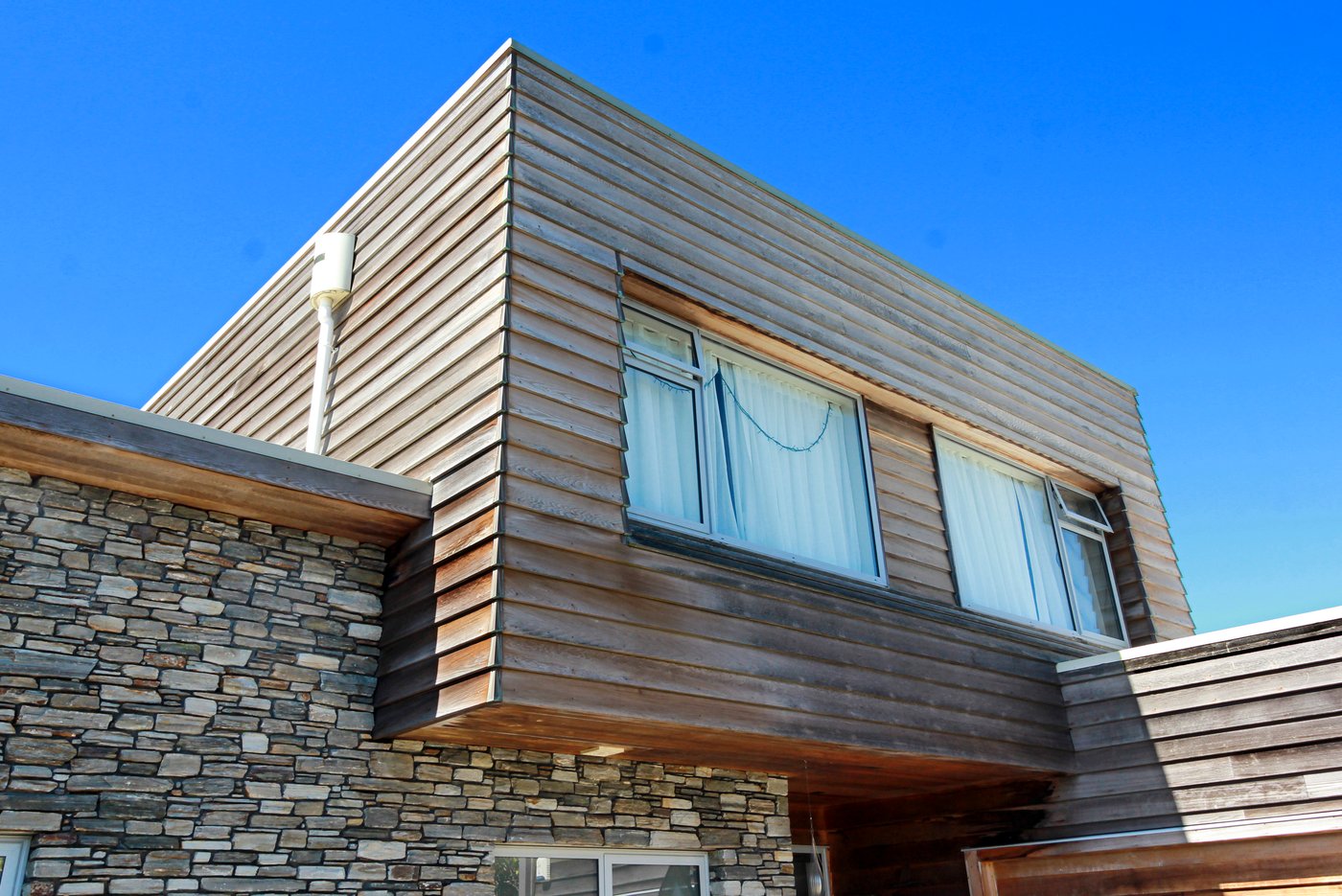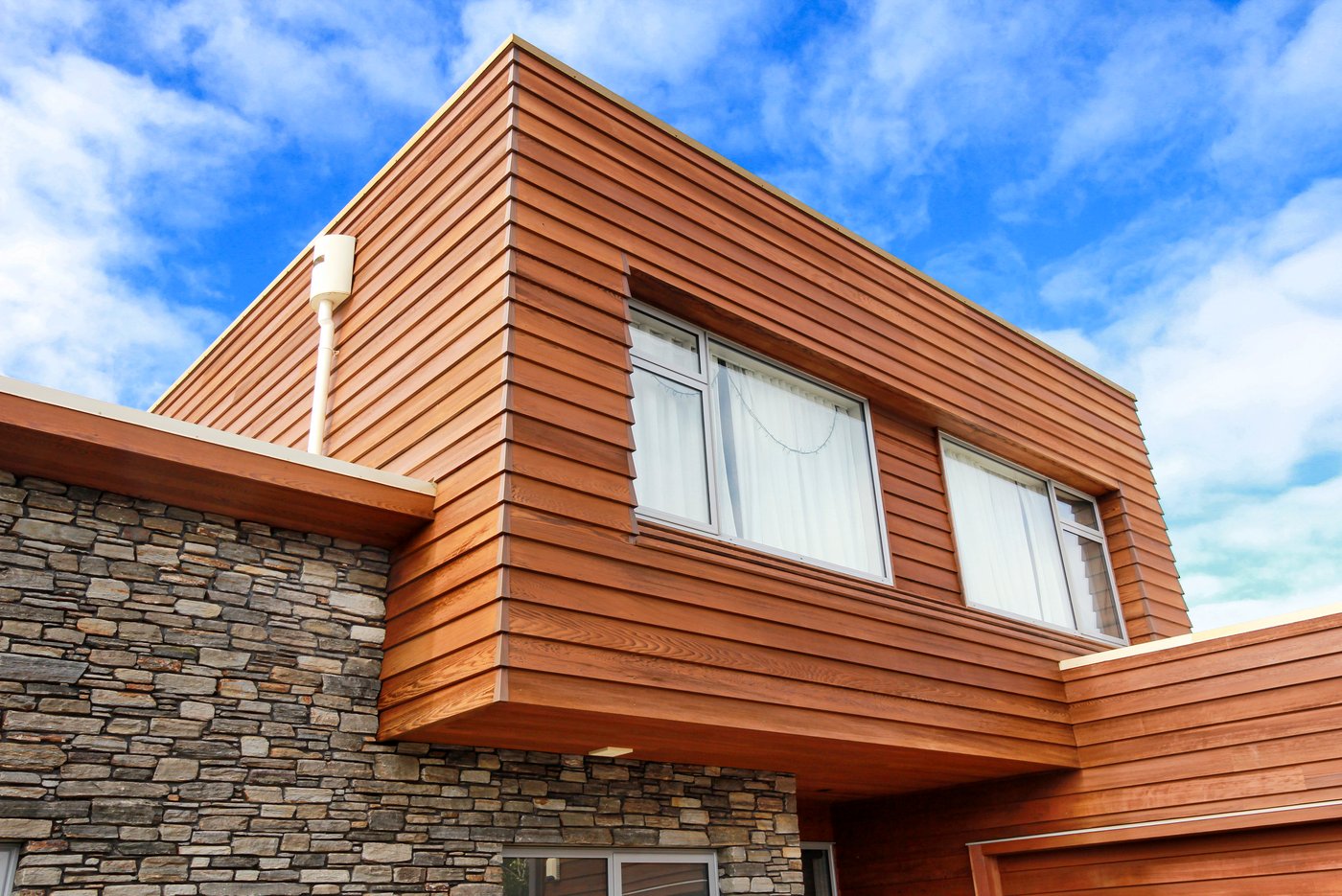The ASB Waterfront Theatre is a modern, 675 seat performing arts venue and the home of the Auckland Theatre Company.
It has received numerous awards for its design, efficiency, and sustainability, including a 2017 Auckland Architecture Award for Sustainable Architecture.
Built by Hawkins Construction and opened in 2016, the theatre’s aesthetic is defined in part by its impressive Cedar feature walls.
The building has two main Cedar walls high on the west and south faces. There are also Cedar doors at ground level on the west and north sides.
Maintenance Timeline
TimberTech was first contacted on the 3rd of March, 2025.
- 7th March, 2025 – Cedar Assessment completed.
- 18th March, 2025 – Quote sent.
- 19th May, 2025 – Job started.
- 16th June, 2025 – Job completed.
The job took 3 weeks in total, with some delays due to inclement weather.
We will check the Cedar again in 12 months and advise if further treatment is needed (usually if the timber was particularly dry). Otherwise, the building will move into a standard 10-year maintenance plan.
Cedar Assessment
The Cedar had been oiled previously, probably around the same time as installation 5 years ago, and nothing had been done to maintain it since.
That’s longer than we normally advise and the Cedar was starting to look dry and weathered, particularly on the high, exposed areas of the building.
The western face received the brunt of the afternoon sun, and the tint was starting to wear off unevenly in places, giving the Cedar a patchy look.

The southern face was largely sheltered from the sun and the pigment in the oil hadn’t broken down as much as the western face.
The doors on the west and north sides had also been affected by graffiti and people rubbing up against the boards and required some restoration.
To remediate these, we lightly sanded the Cedar before applying the oil.
Cedar Maintenance Process
No matter the size and scale, the first step in any Cedar maintenance job is to deep clean the timber with a penetrating surfactant and remove any built-up organic matter.
As the building is in the heart of Wynyard Quarter, the timber had been exposed to considerable dust, grime, air pollution, along with wind and salt coming from the ocean.
Before applying the oil, we had to mask the surrounding concrete to make sure the oil didn’t leave any stains.
We colour matched the tint using Wood-X to ensure the colour would match the original look of the building.
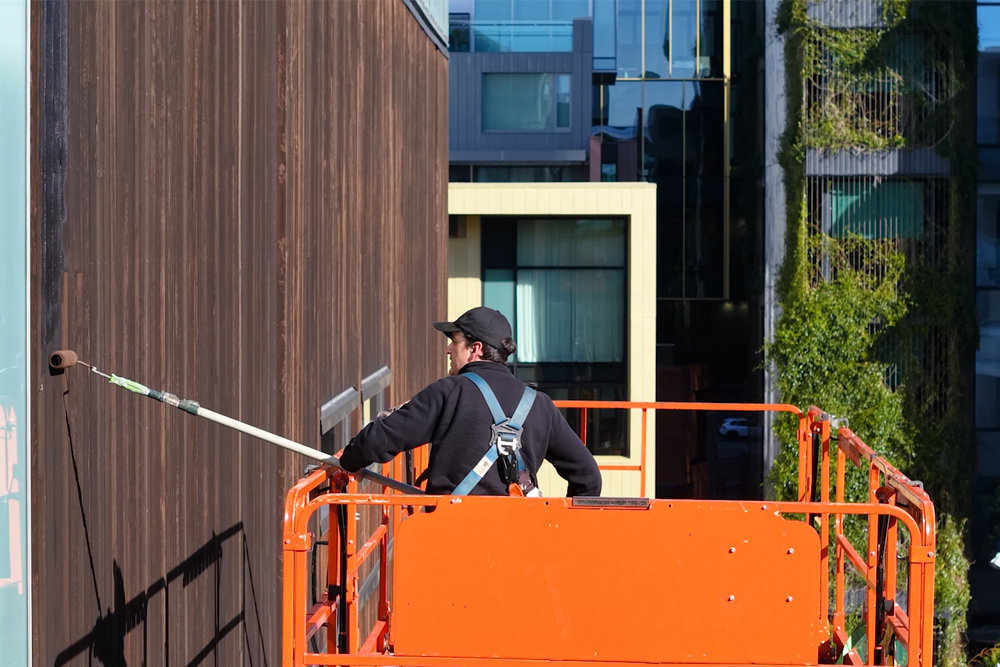
To reach the Cedar high on the western face, we used a 15-meter knuckle boom. The southern face was even higher and required an 18-meter scissor lift.
It was only once we got up close to the boards that we saw how dry they were. Cedar will tell you when the pores are full just by looking at the surface. In the end, we used much more oil than we expected.
Cedar Maintenance Challenges
There were two main challenges for this project: traffic management and the height of the building.
The building is situated in a busy area with a lot of pedestrian traffic, requiring appropriate safety measures such as signage, flagging and a spotter on the ground to direct pedestrians.
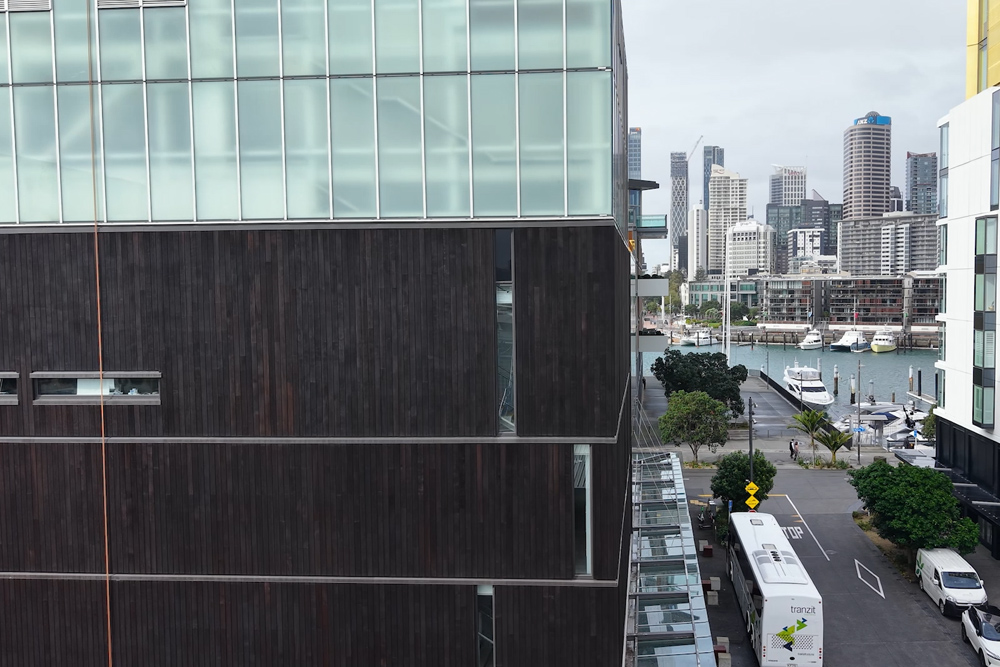
There was also a shared driveway along the western side of the property that could not be blocked.
Communication with both the public and the neighbouring tenants was essential in making sure the project ran smoothly, with as little disruption as possible.
The height also presented some unique challenges. The height itself was not an issue – we have a lot of experience working on tall buildings and using specialised equipment to reach high areas – but where the building was located.
Strong winds regularly came in from the ocean and funneled between the tall buildings all around, limiting when we could use the scissor lift and knuckle boom.
The Final Outcome
The result was stunning, retuning this prestigious building back to its original state and protecting it against the elements for years to come.
The Cedar went from grey and shabby to a vibrant and deep hue, beautifully contrasted by the metal and glass of the surrounding buildings.
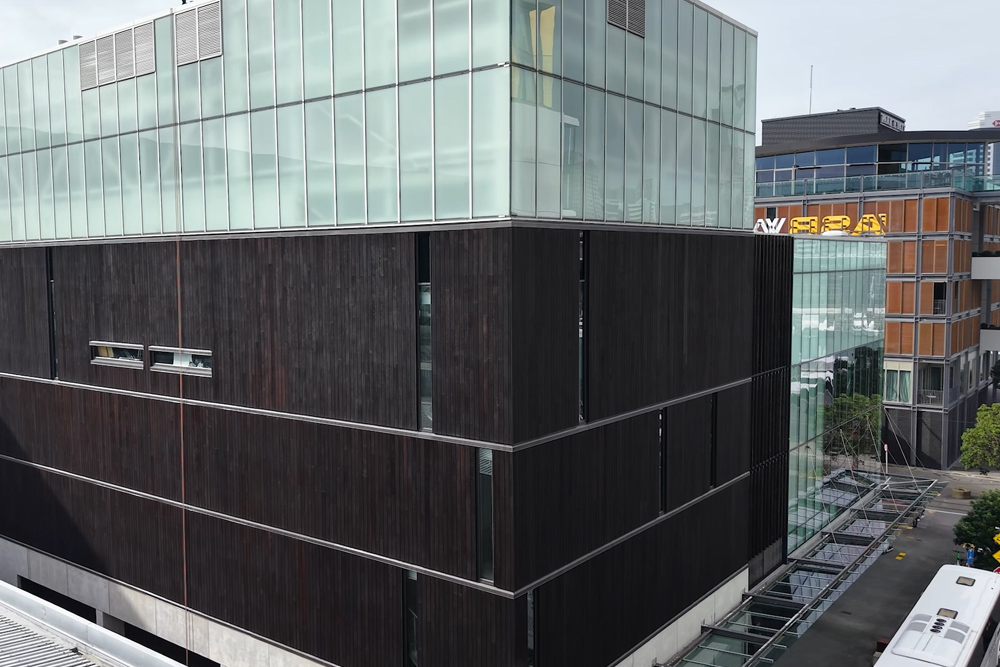
The building managers were very satisfied with the outcome, highlighting the excellent colour match to the original aesthetic and minimal disruption to neighbours and pedestrians.
To see this landmark building for yourself, visit 138 Halsey Street next time you are down at Wynward Quarter.



